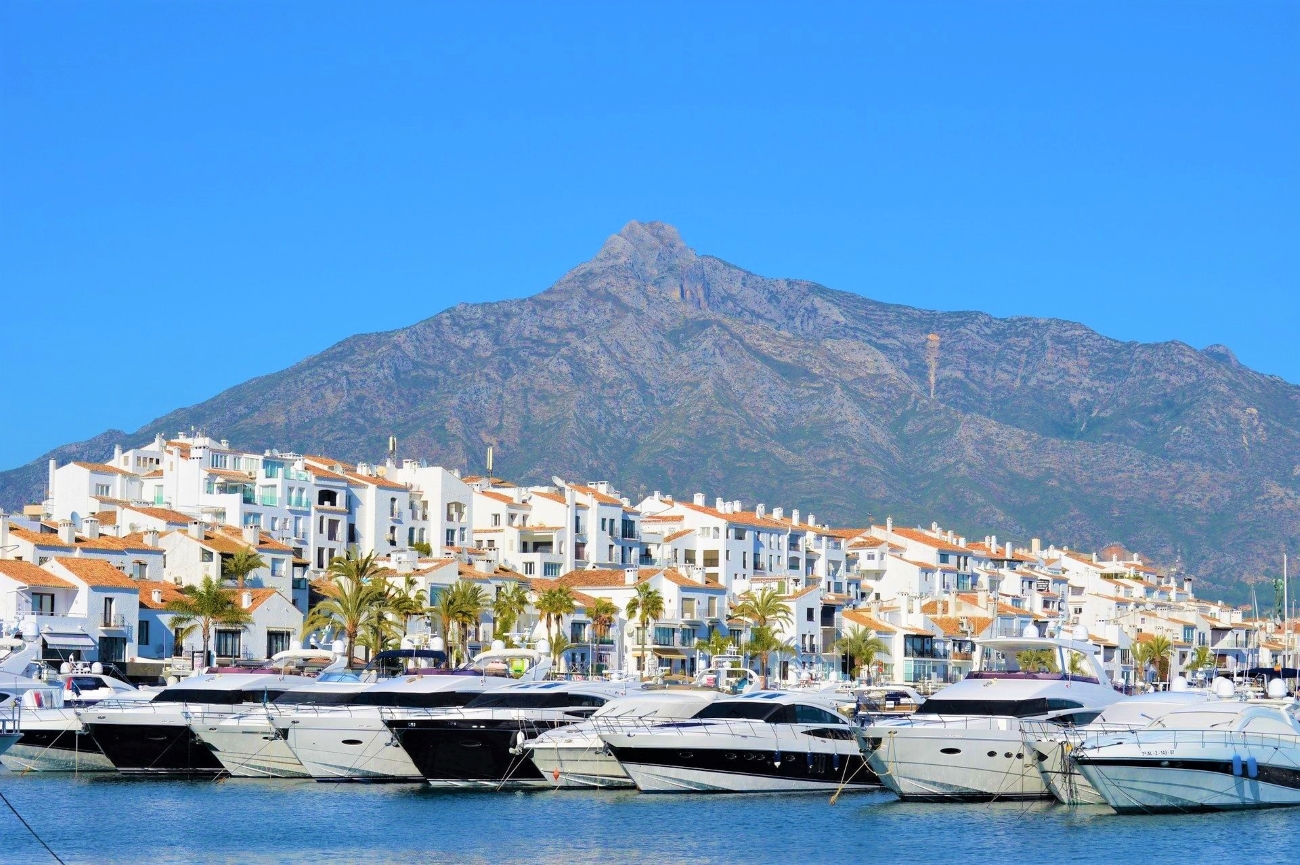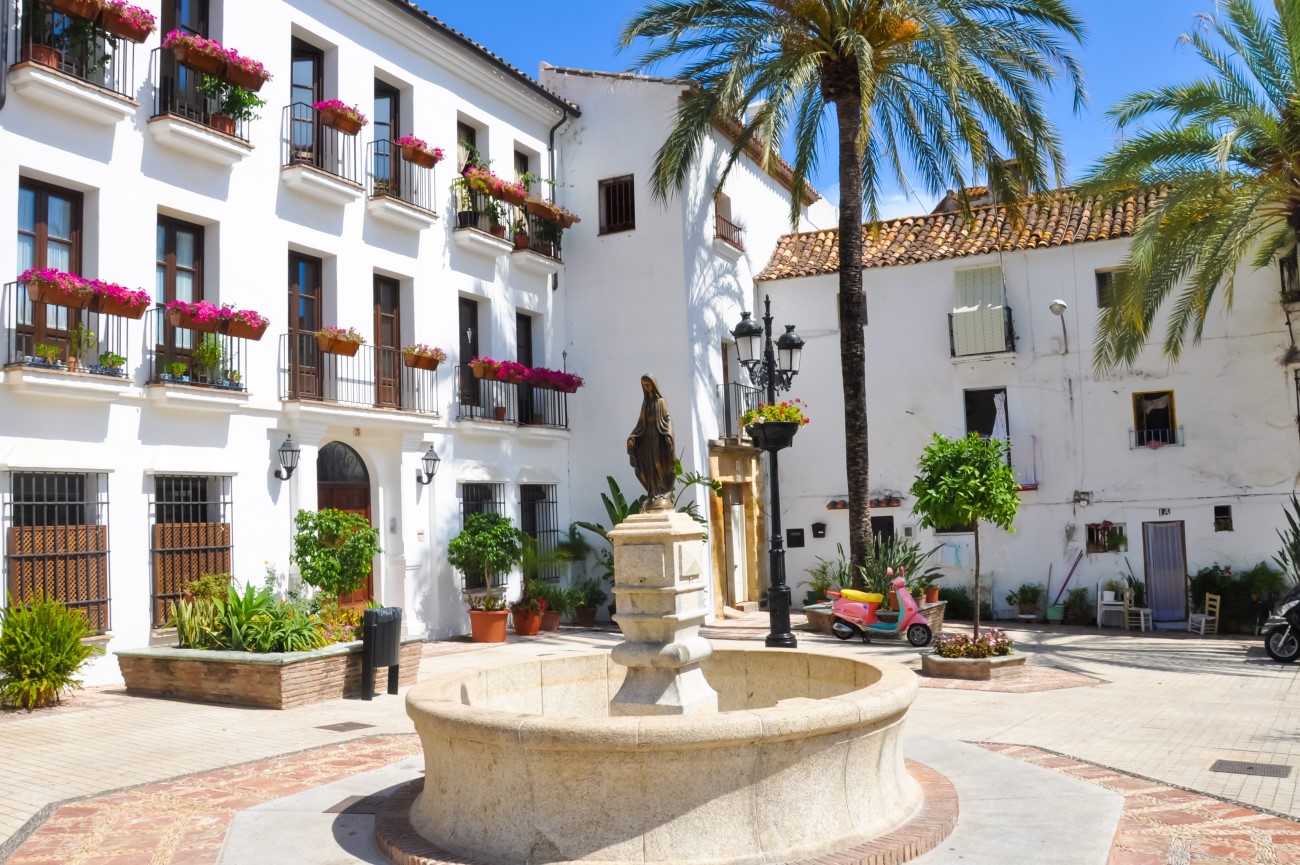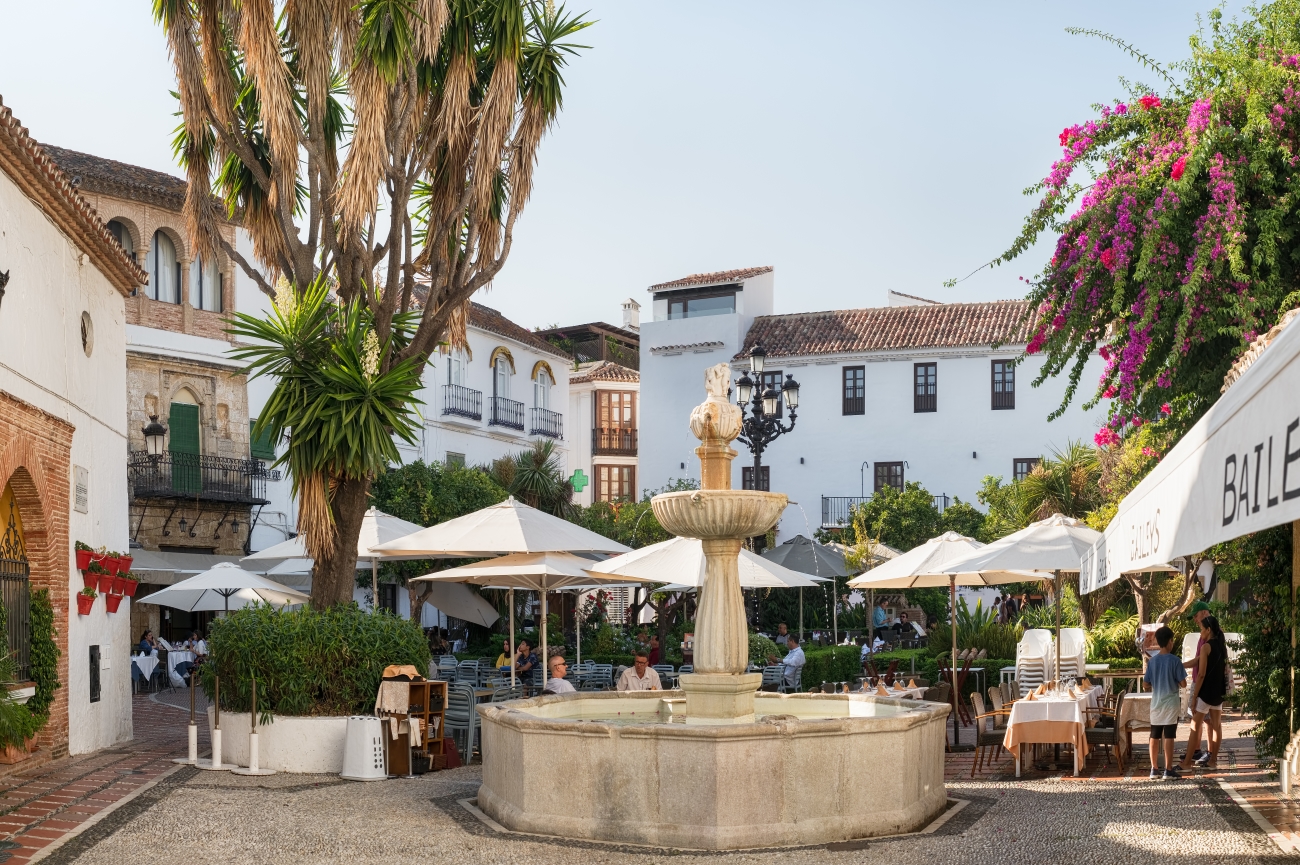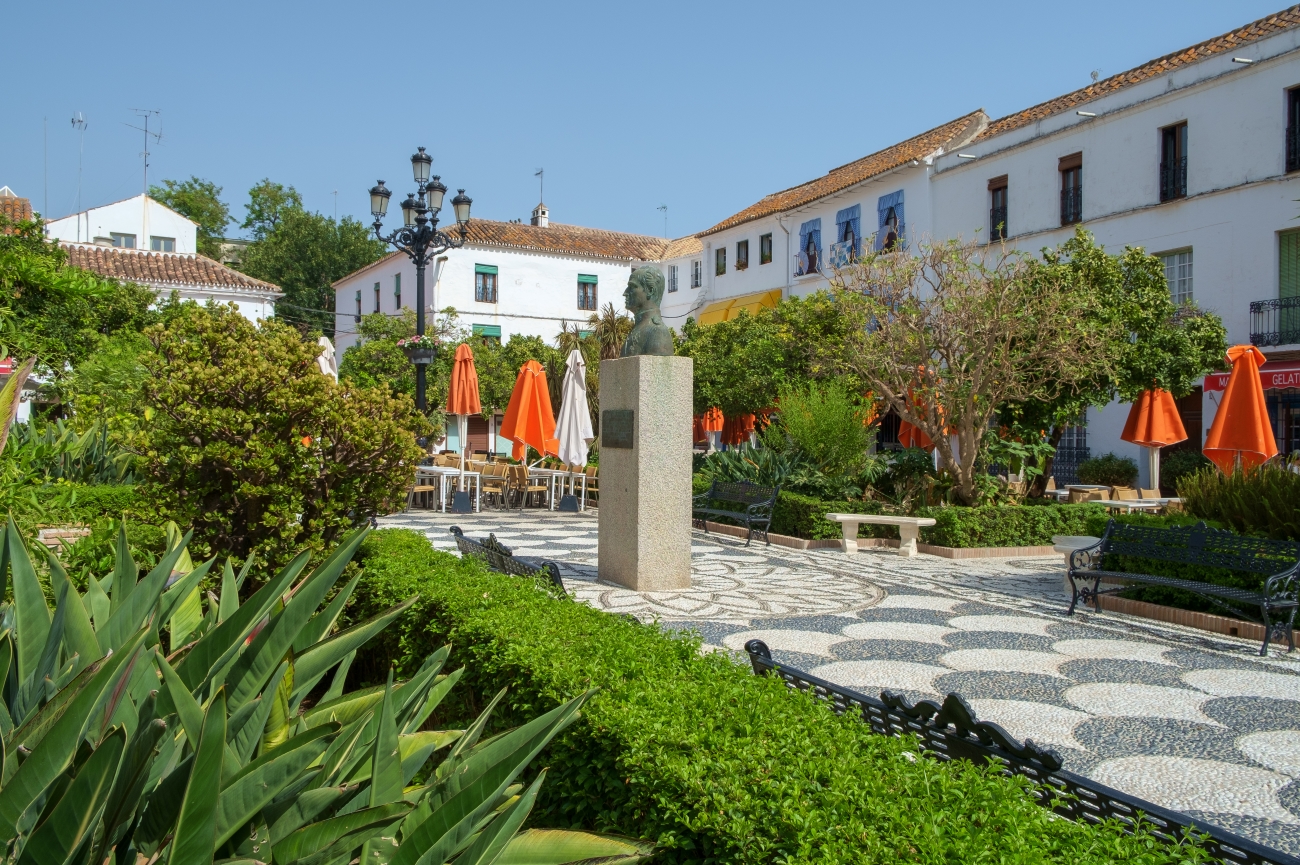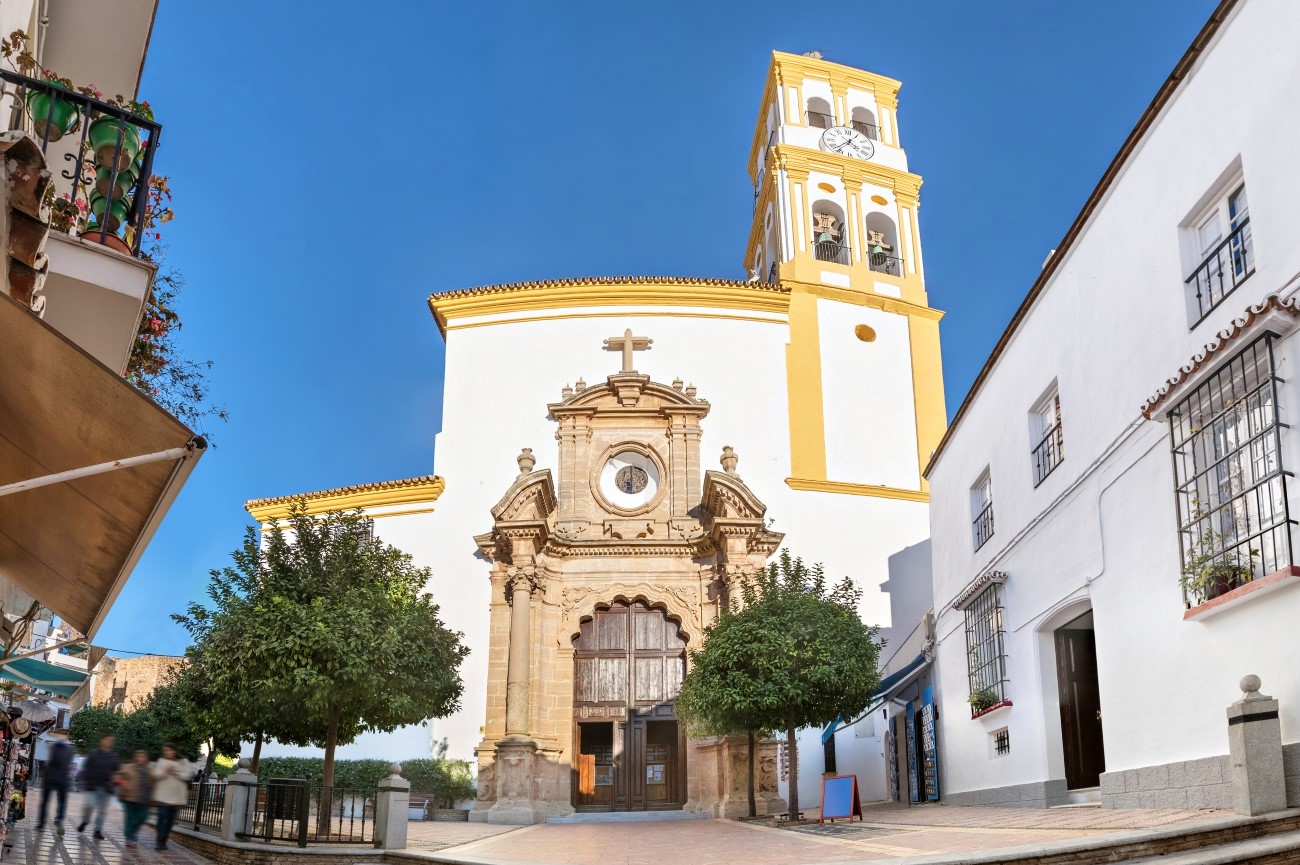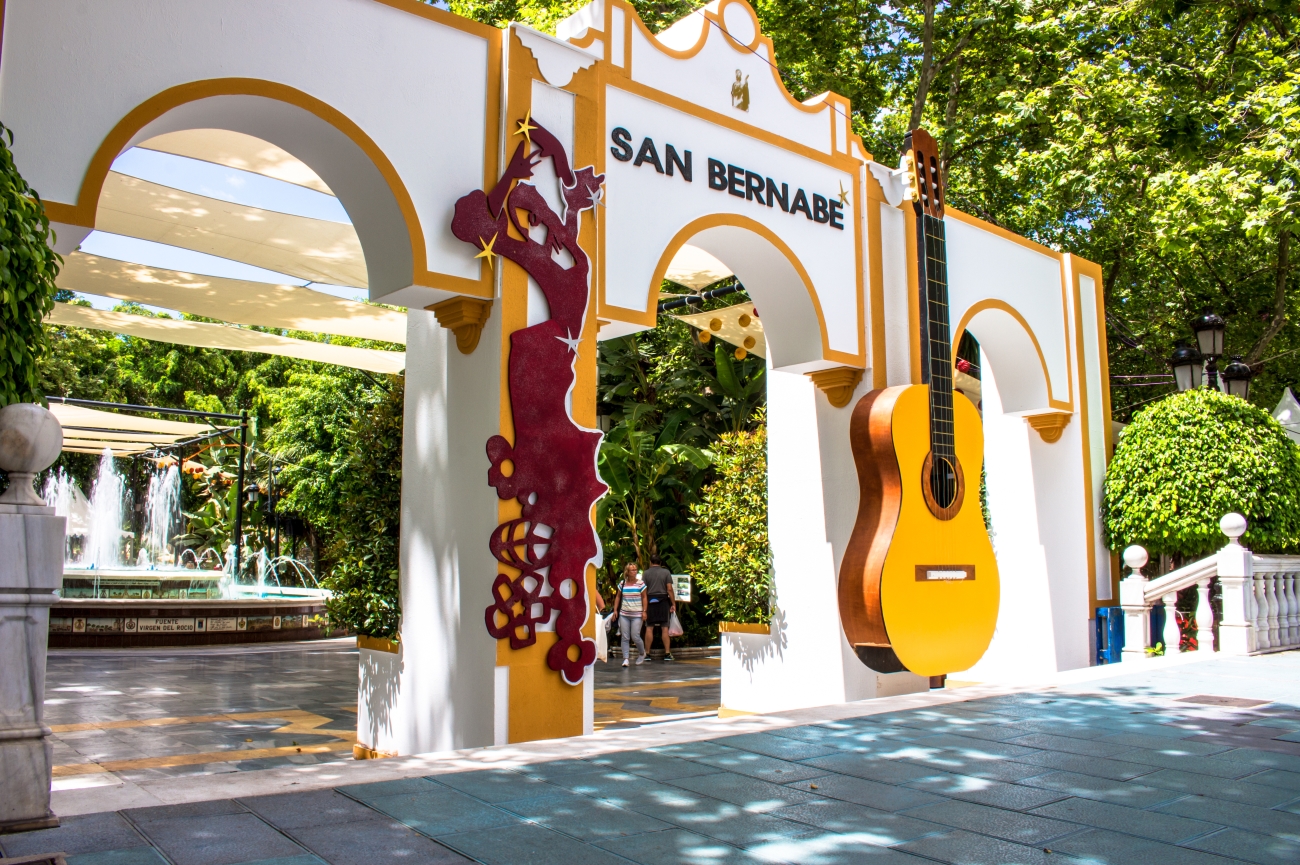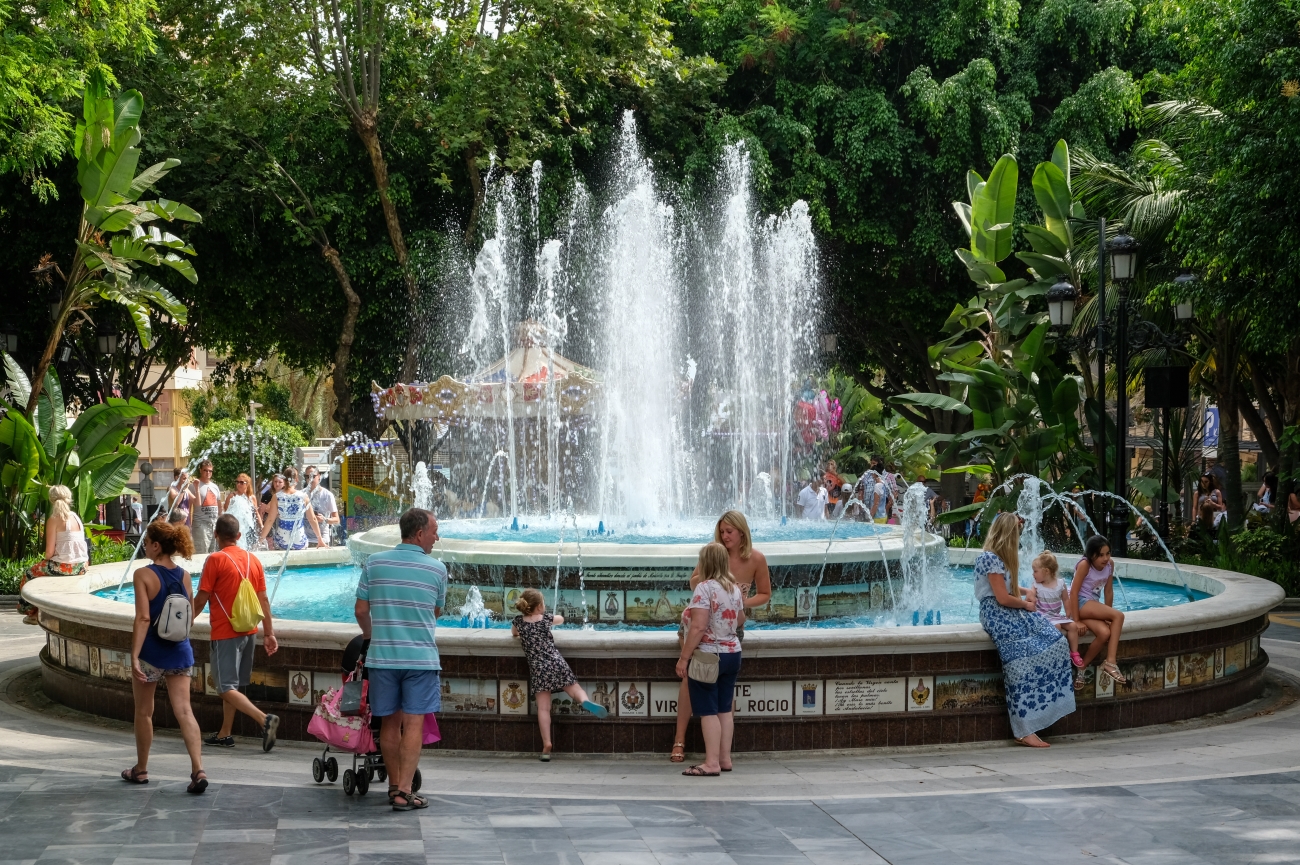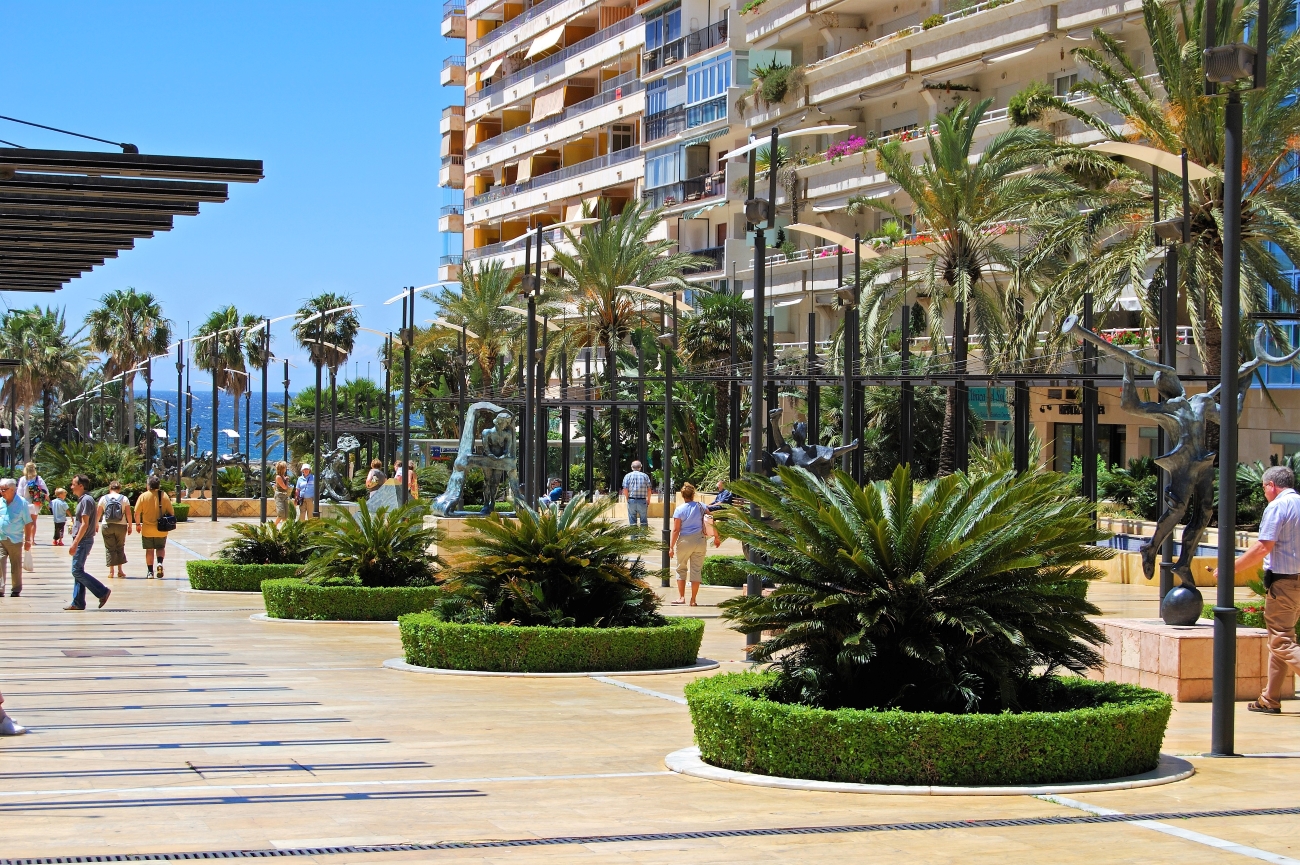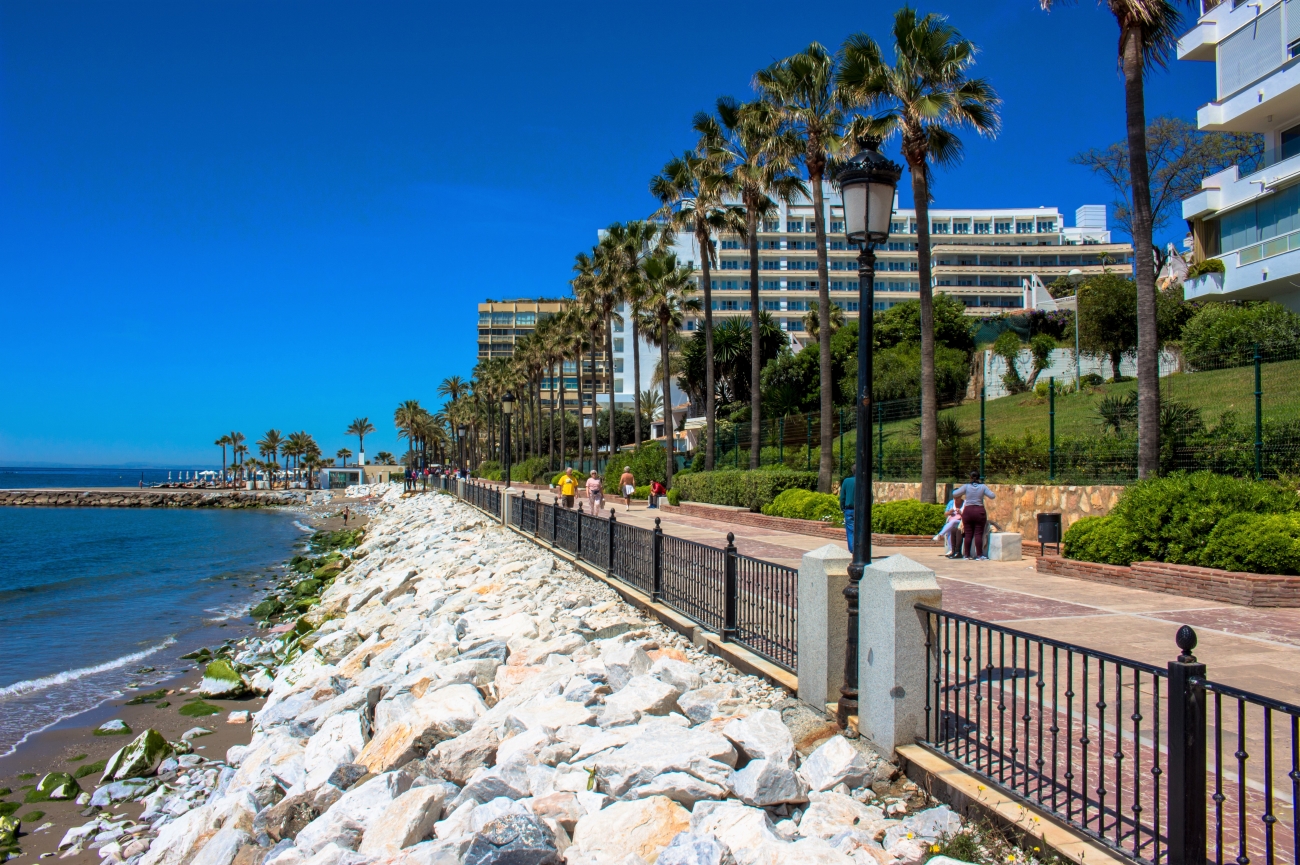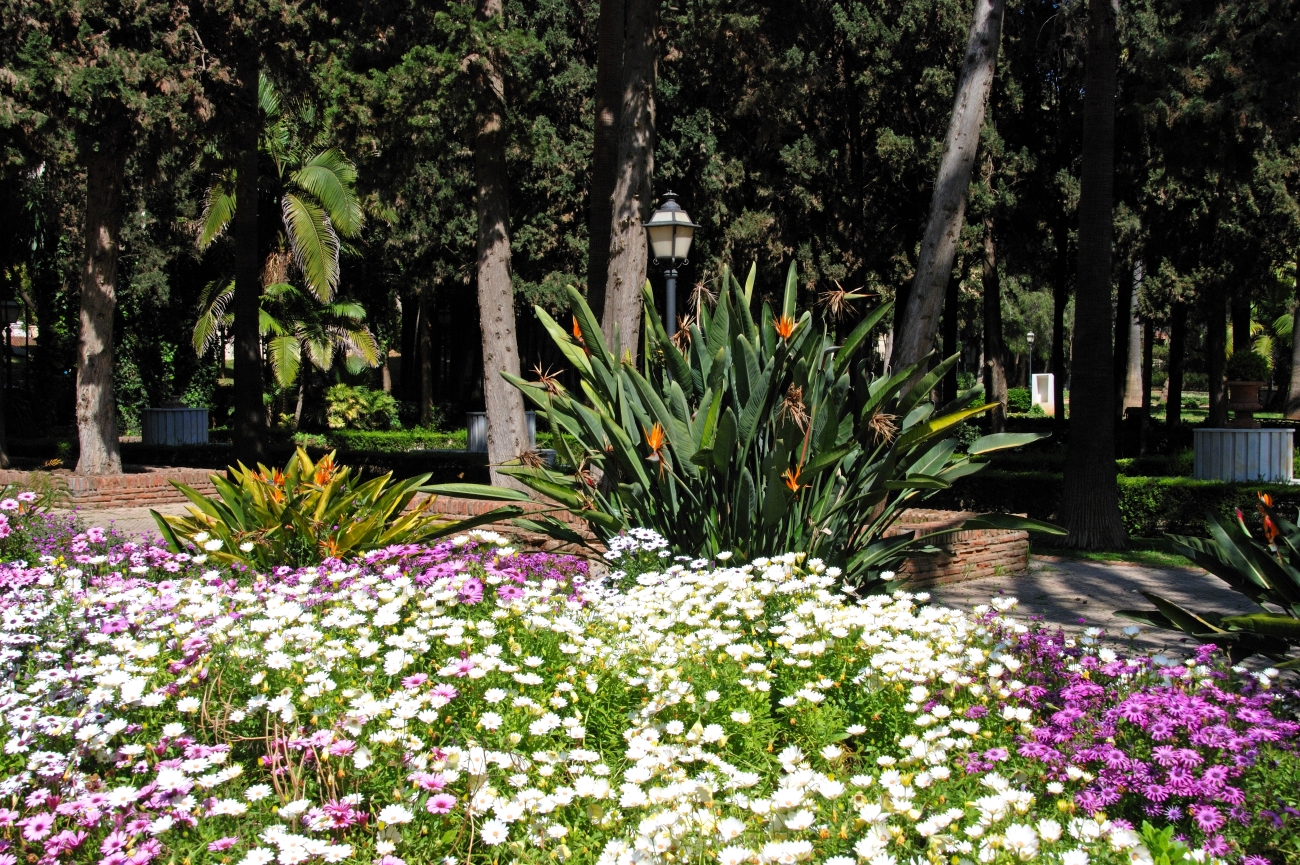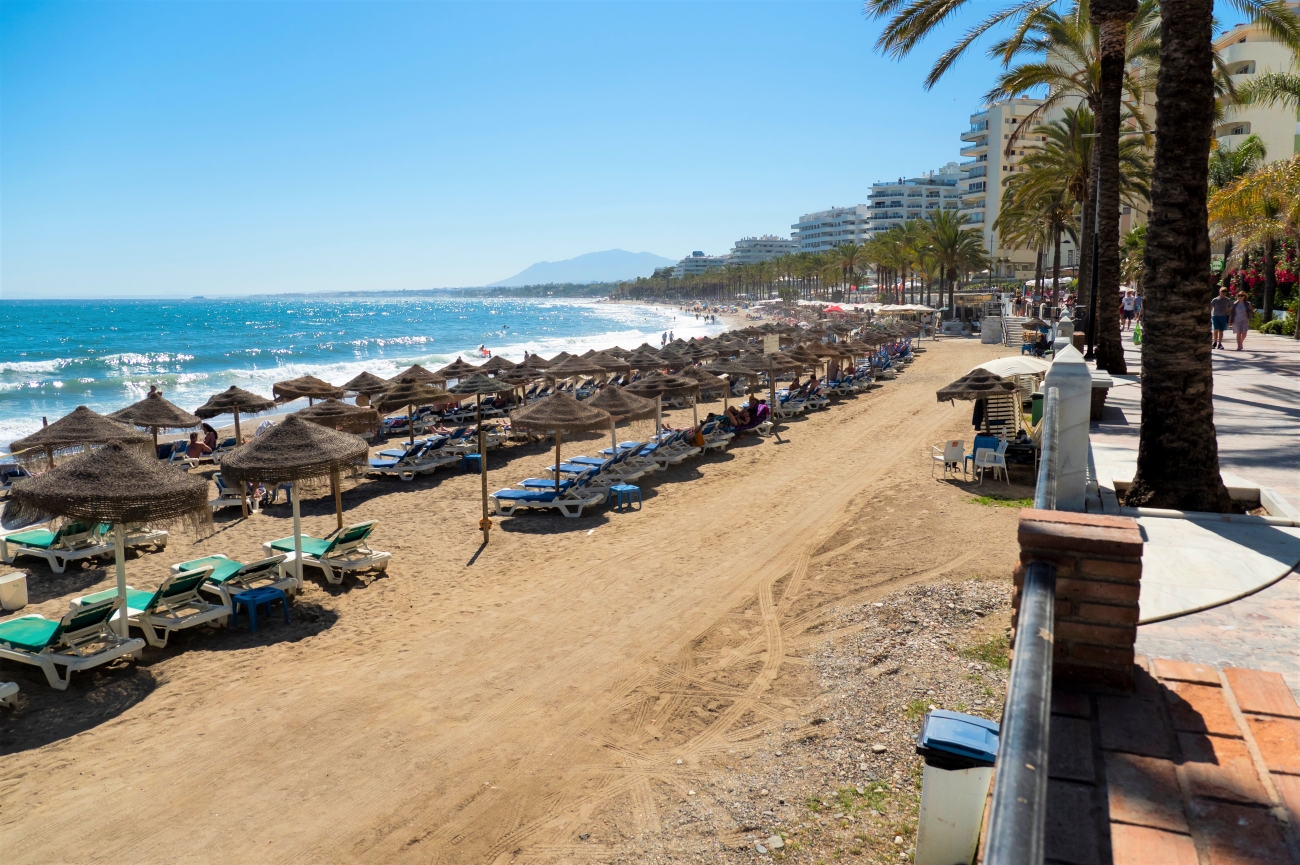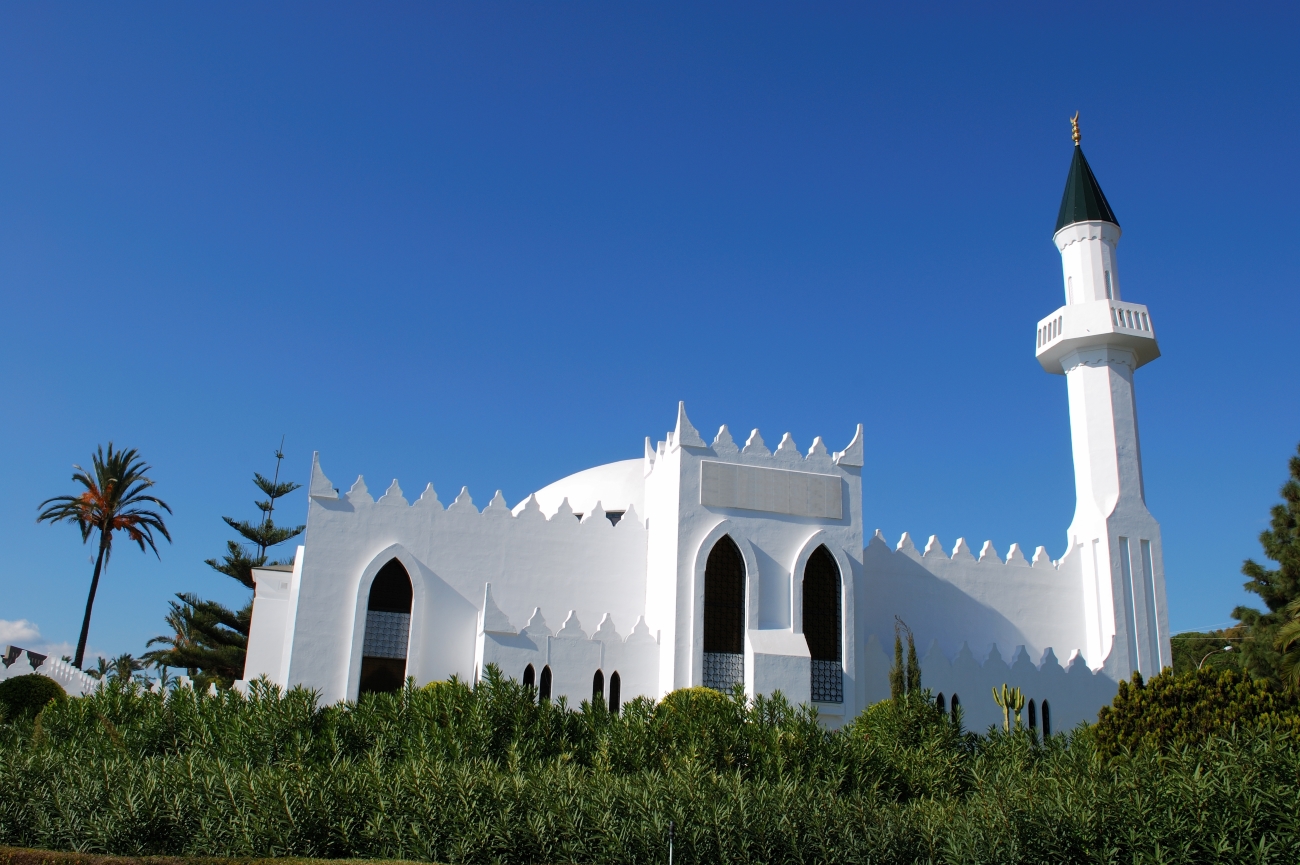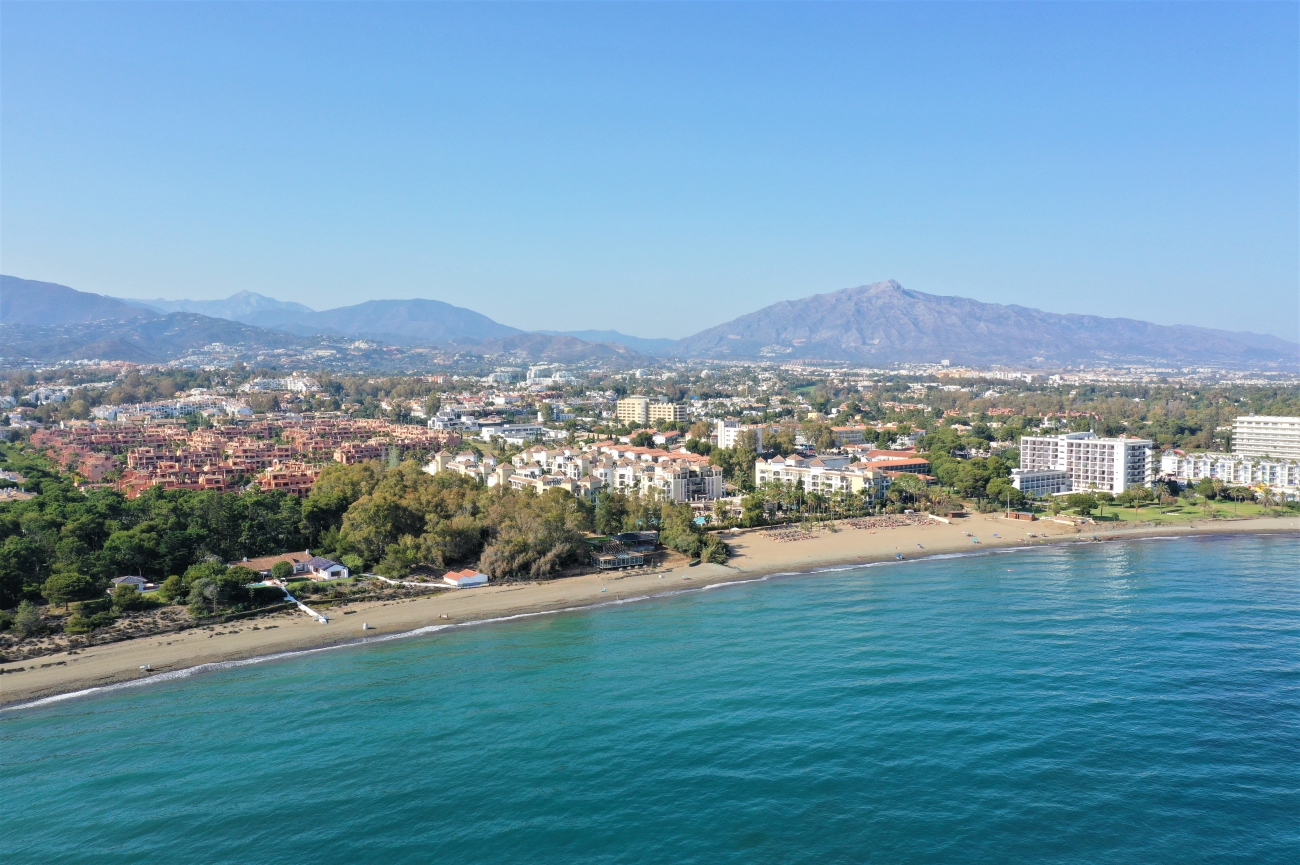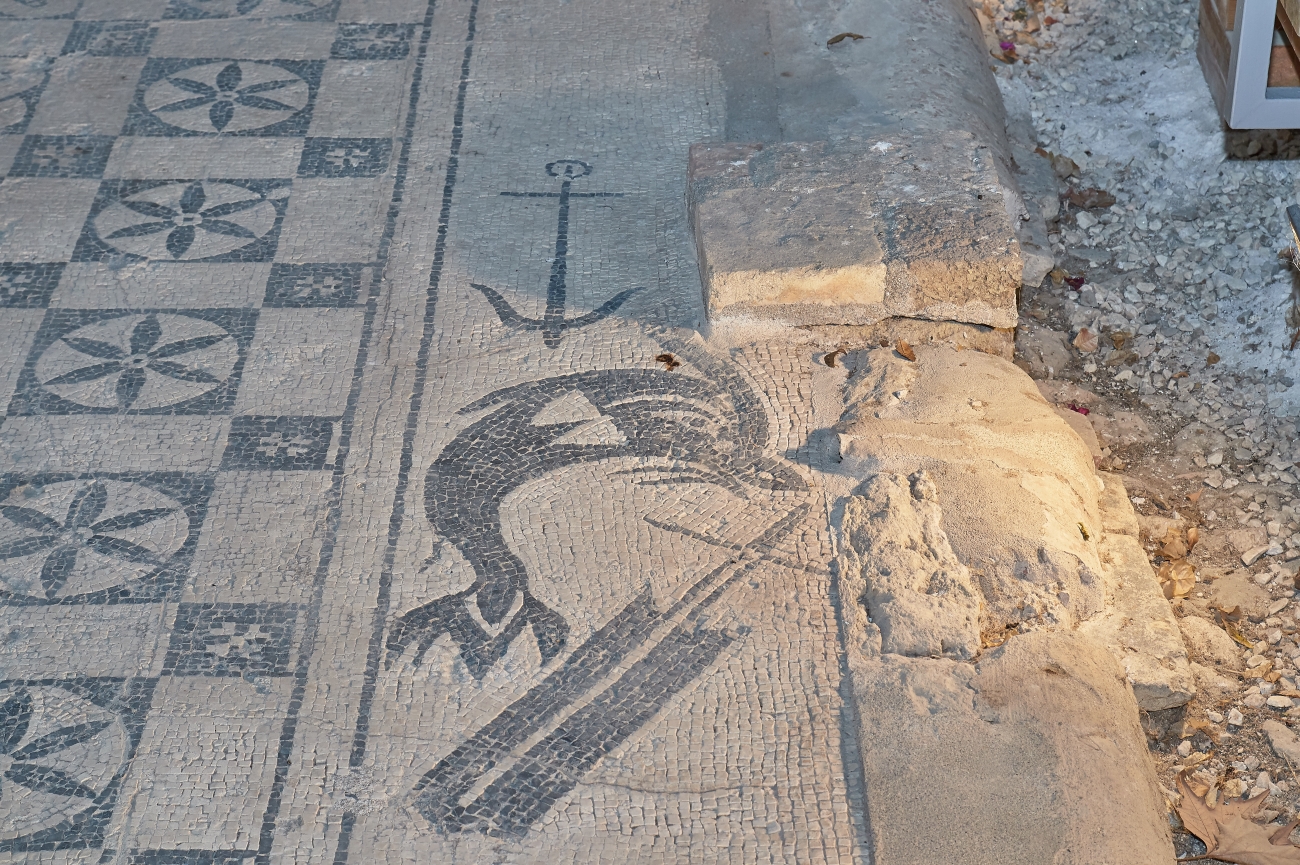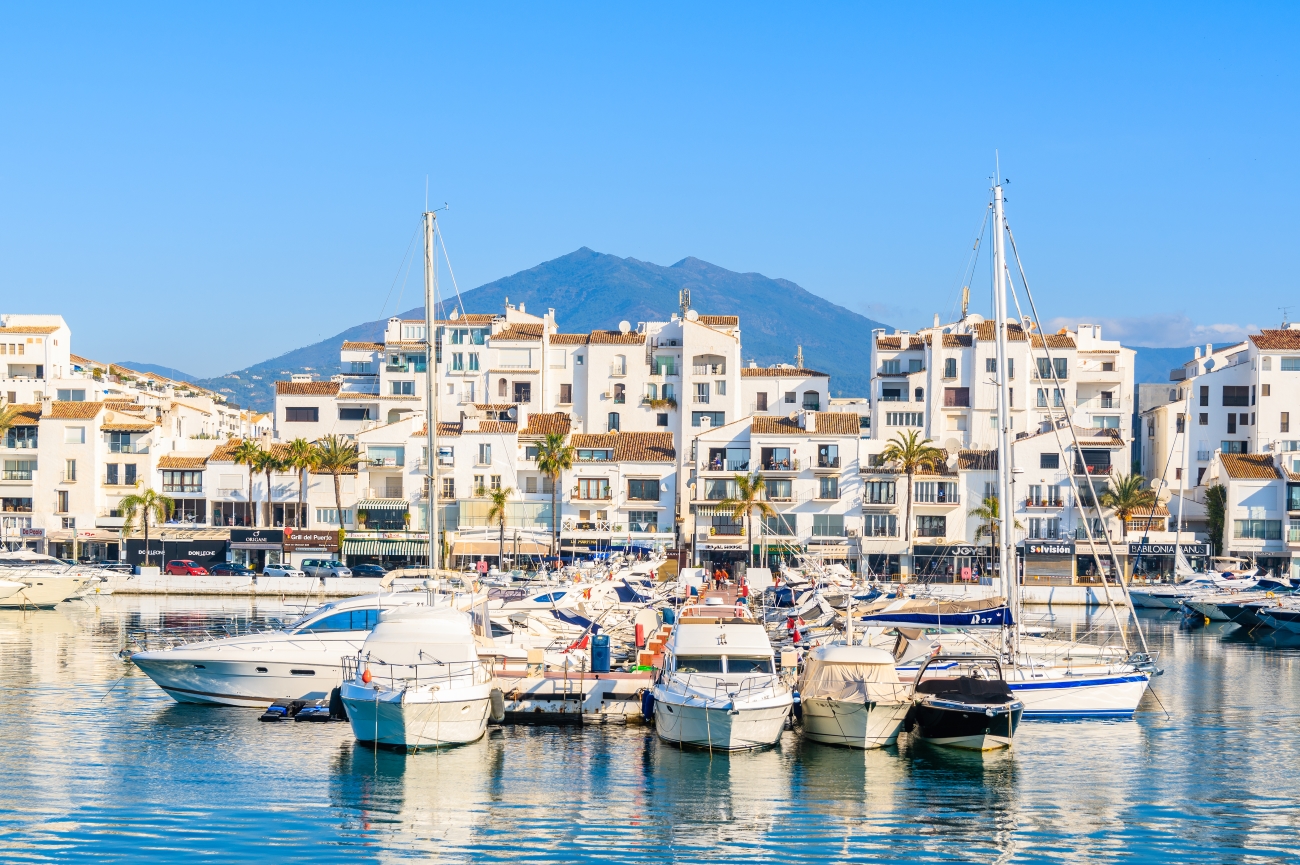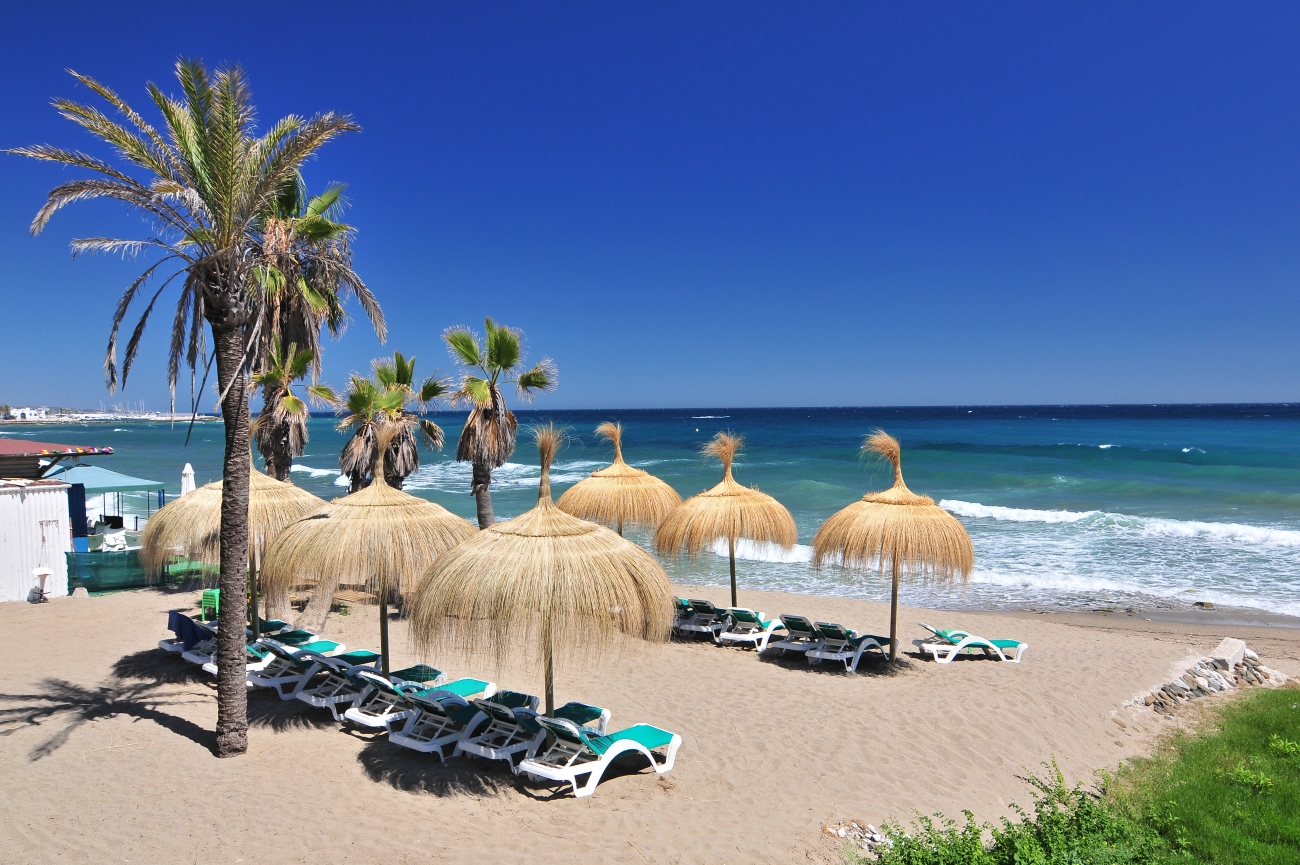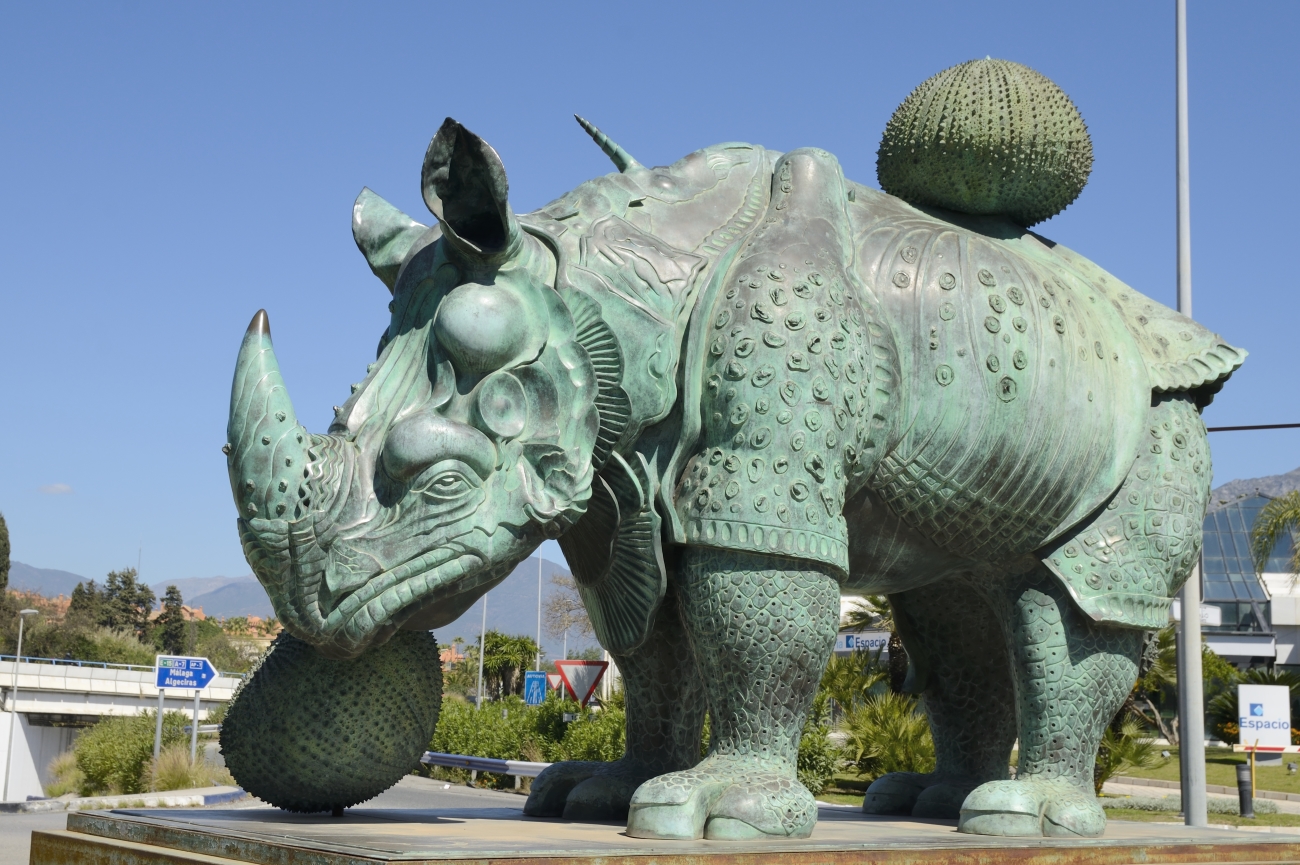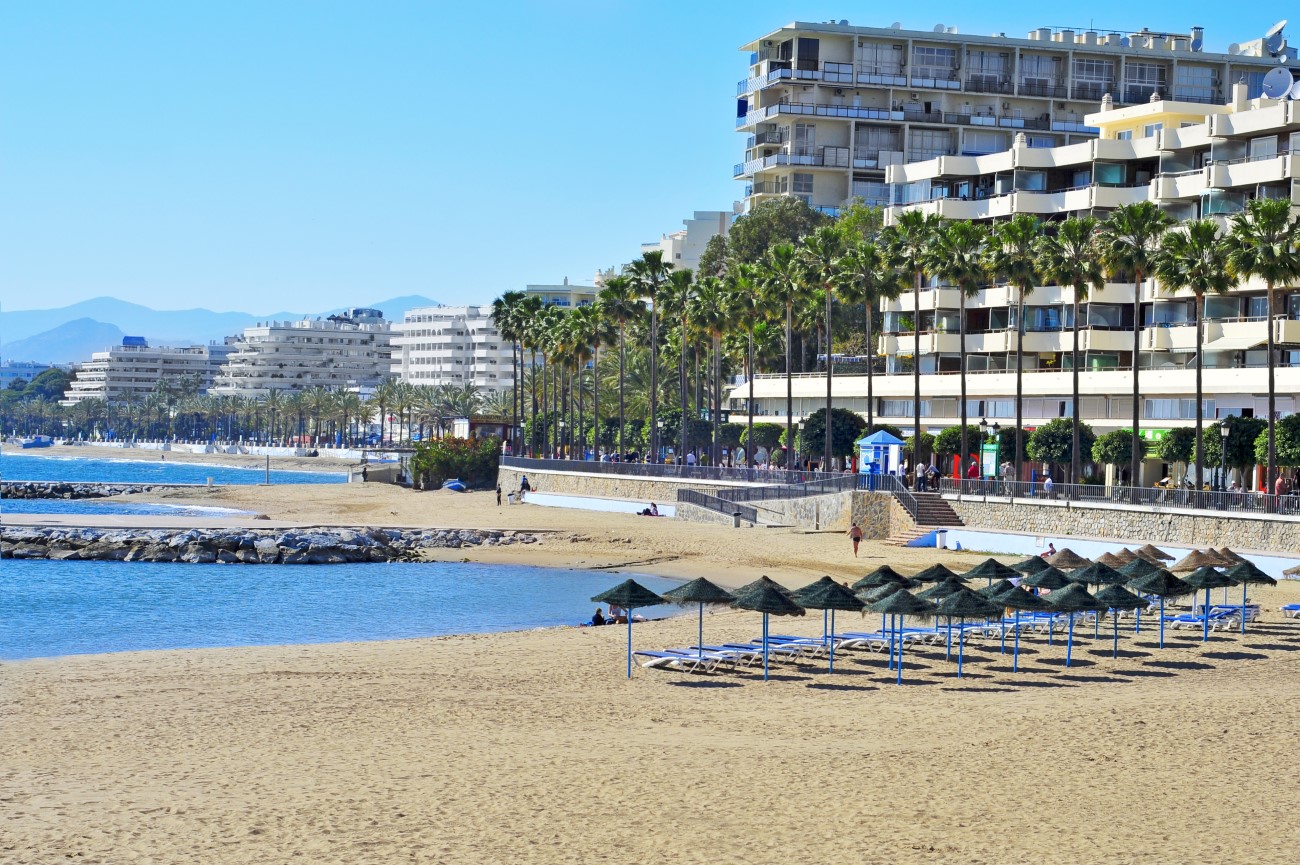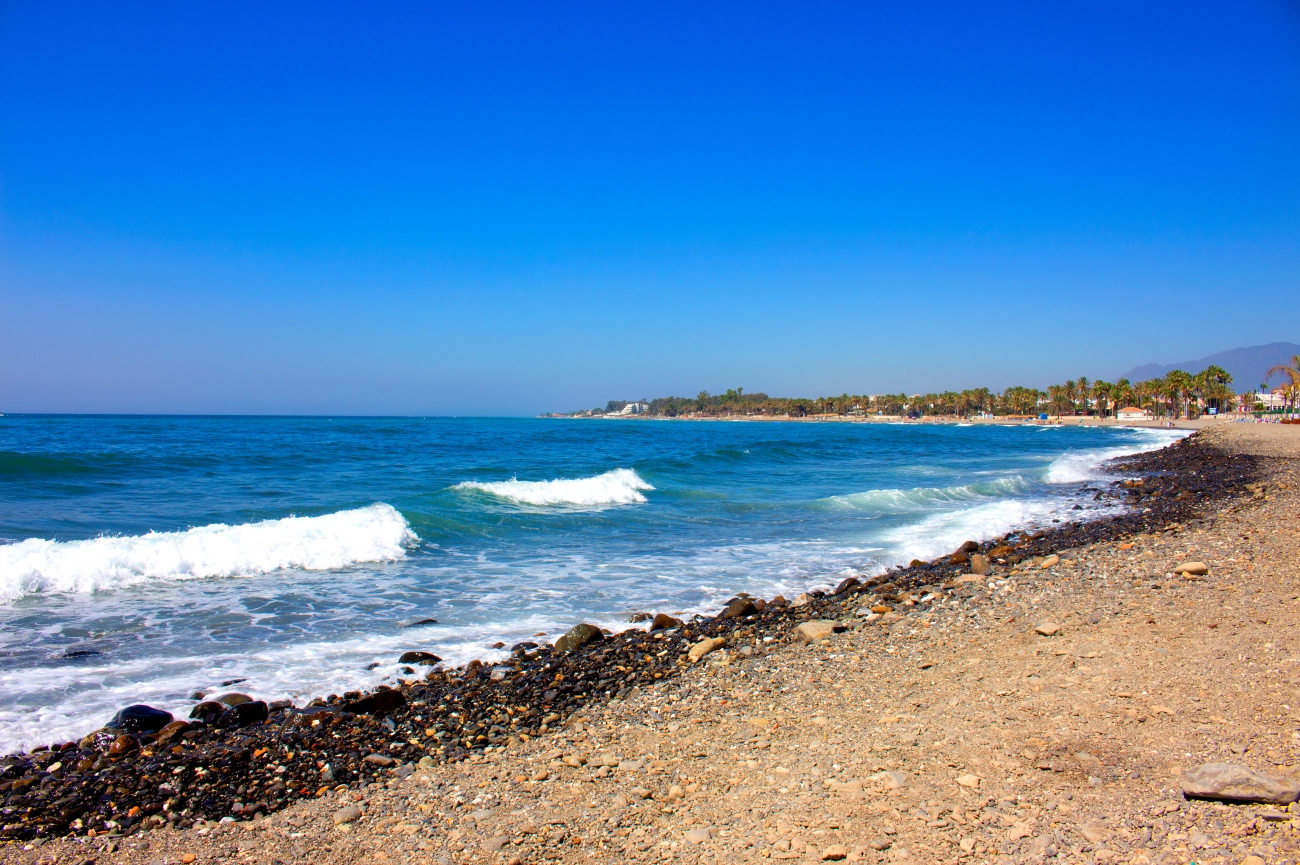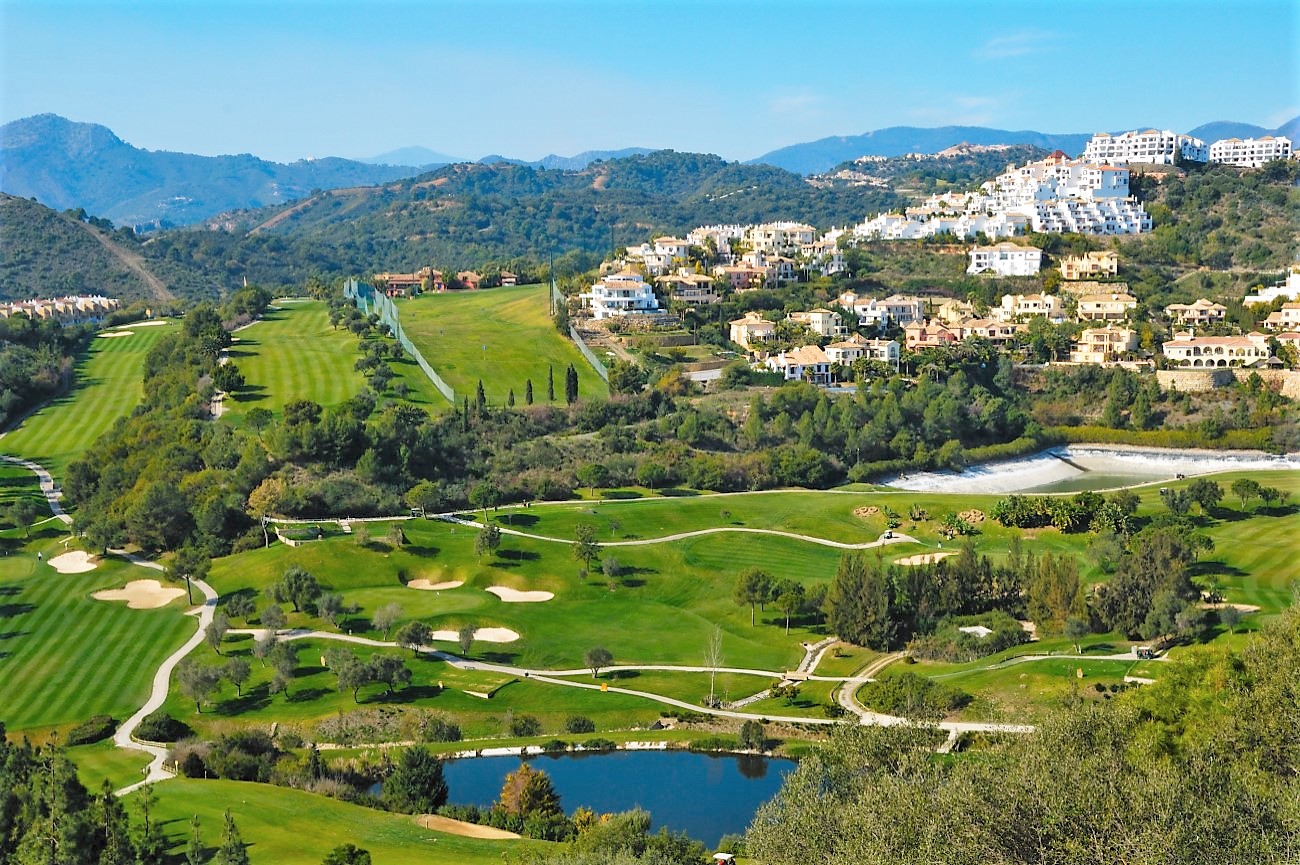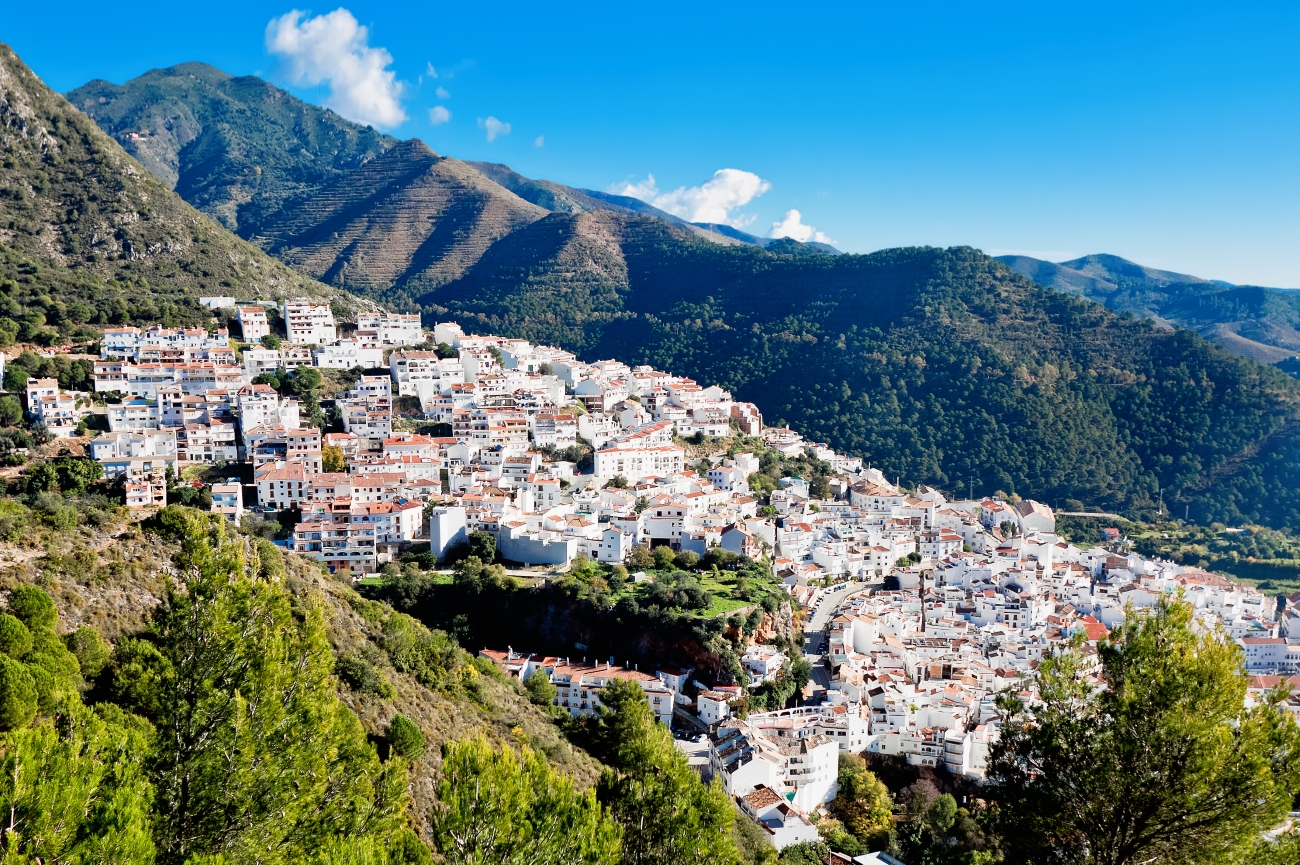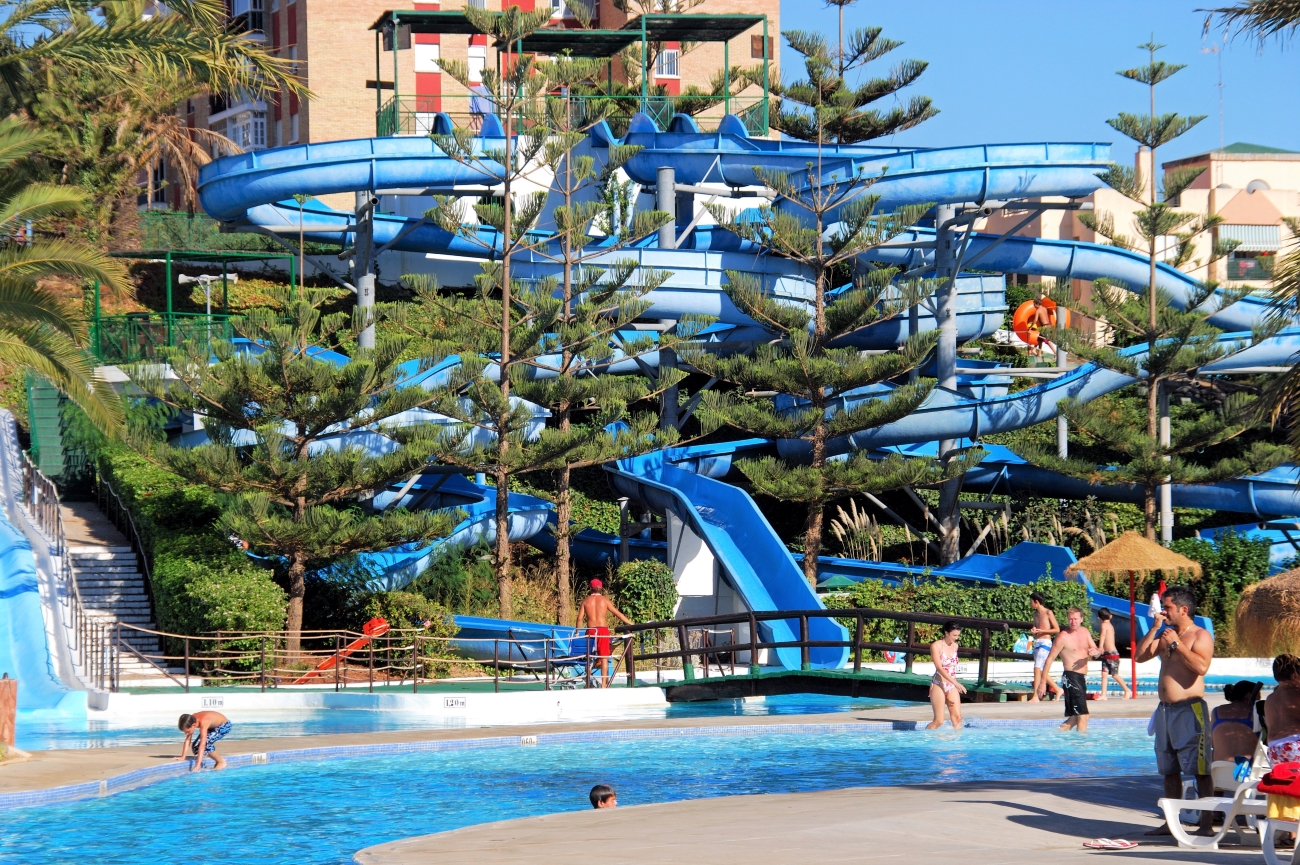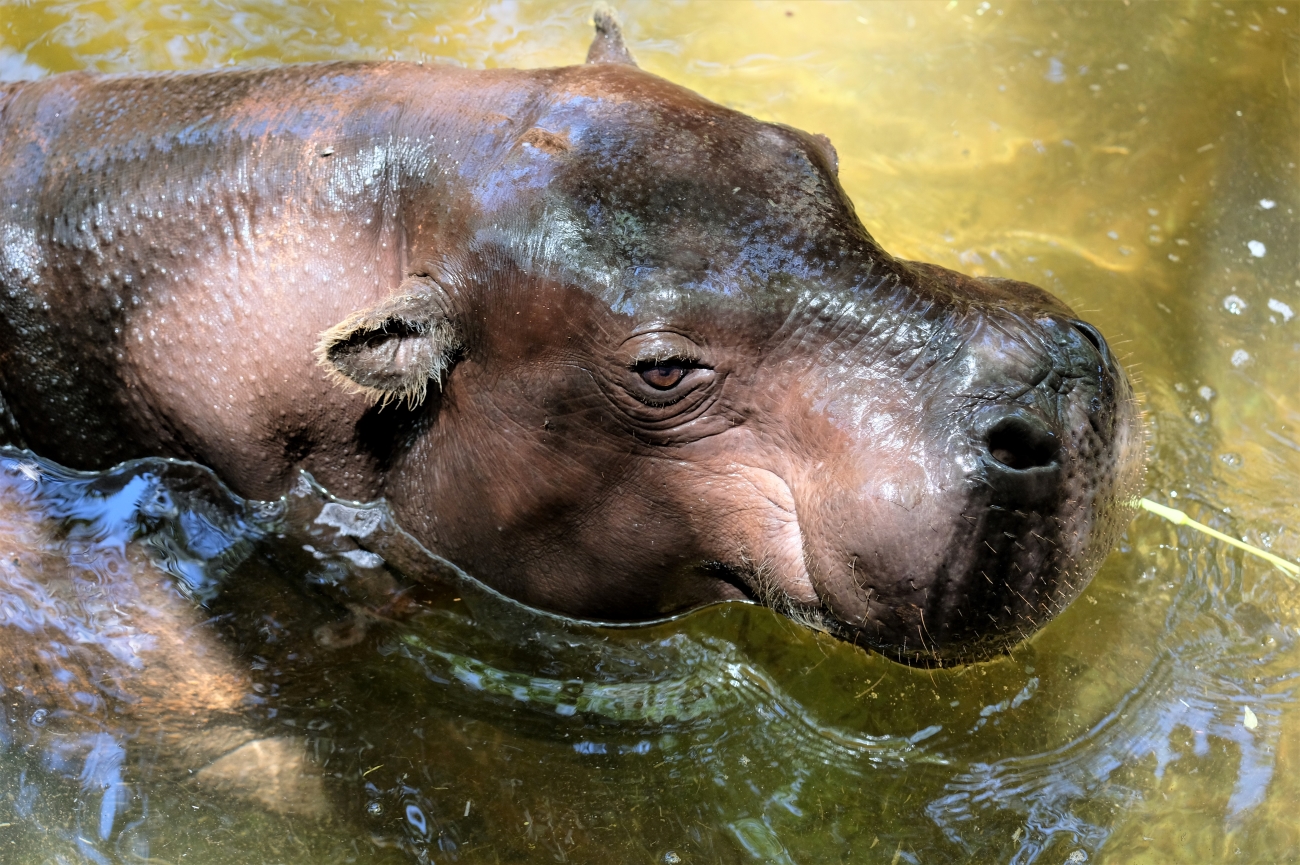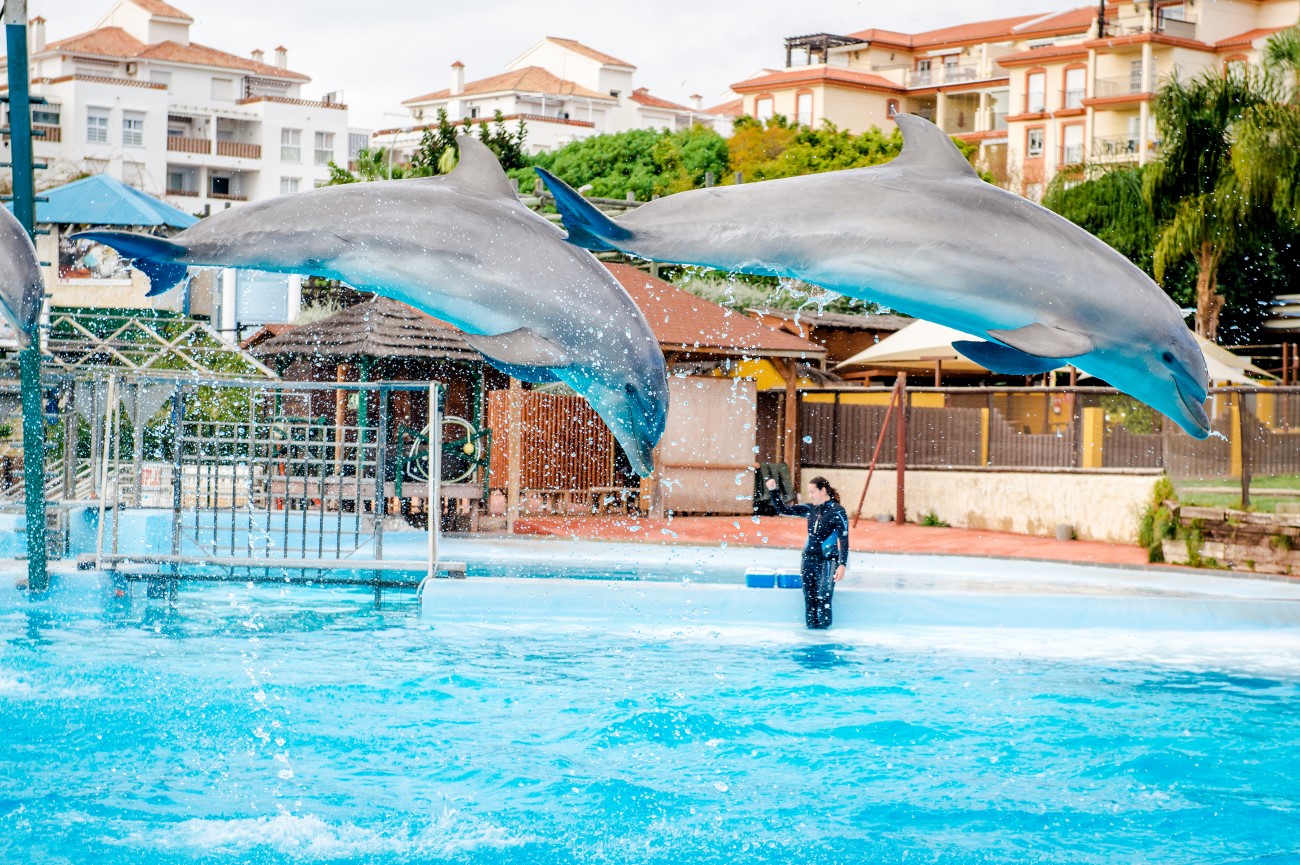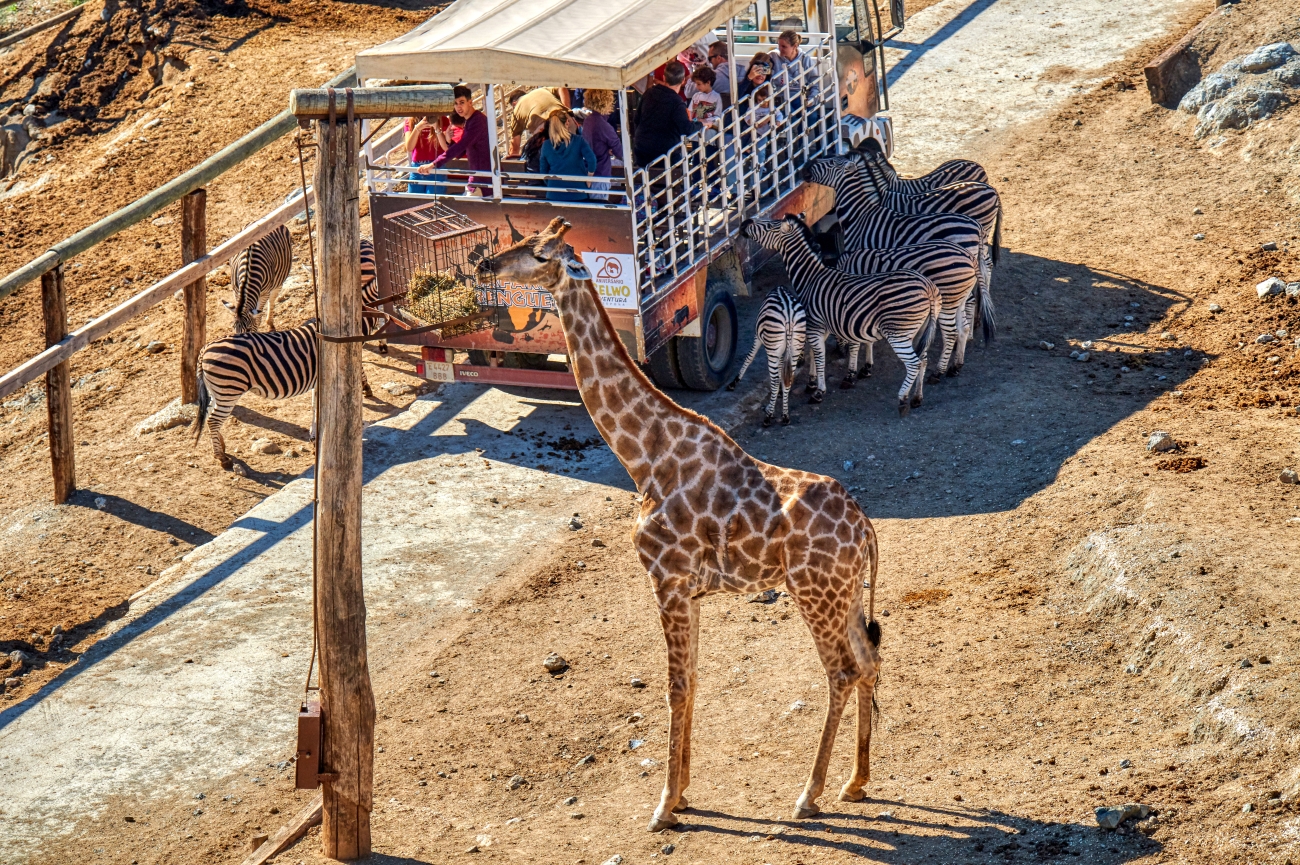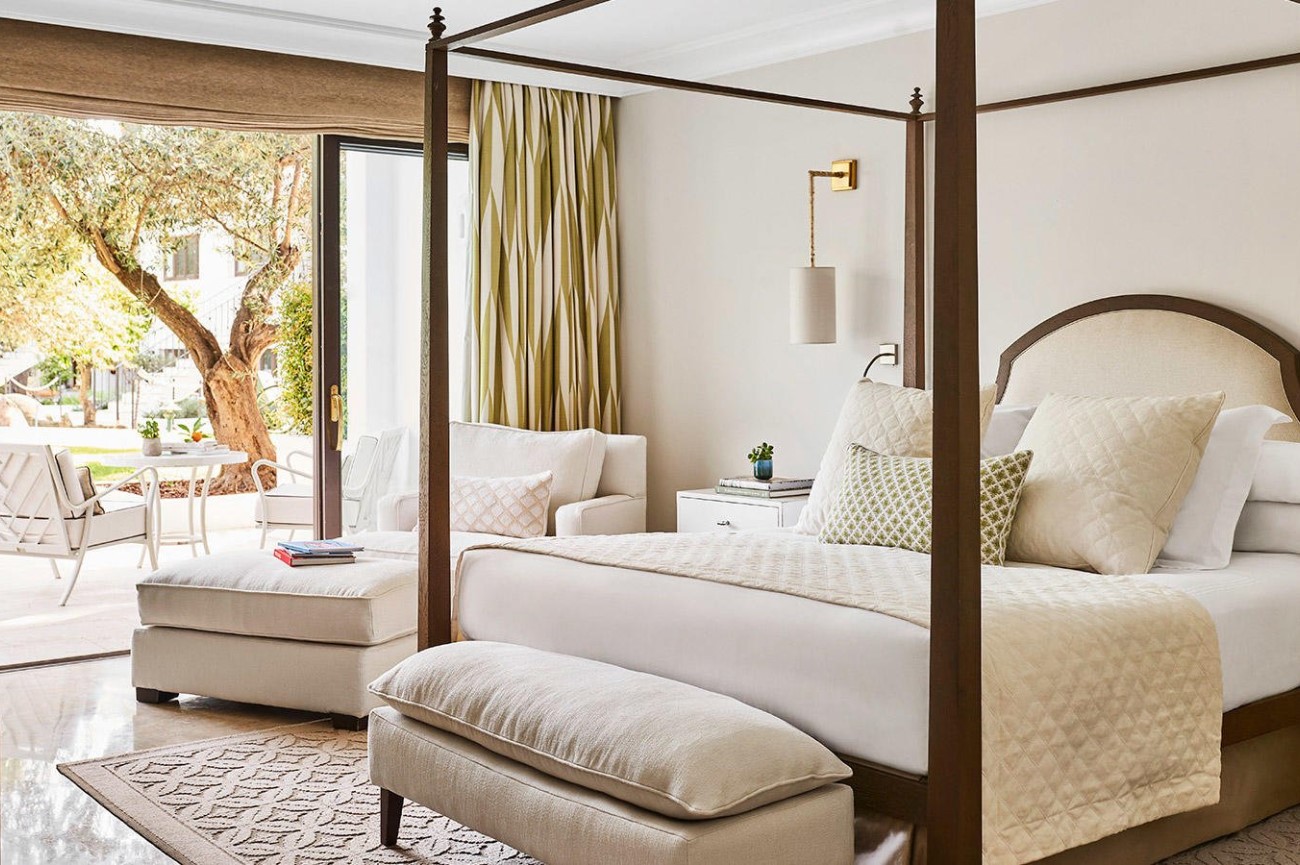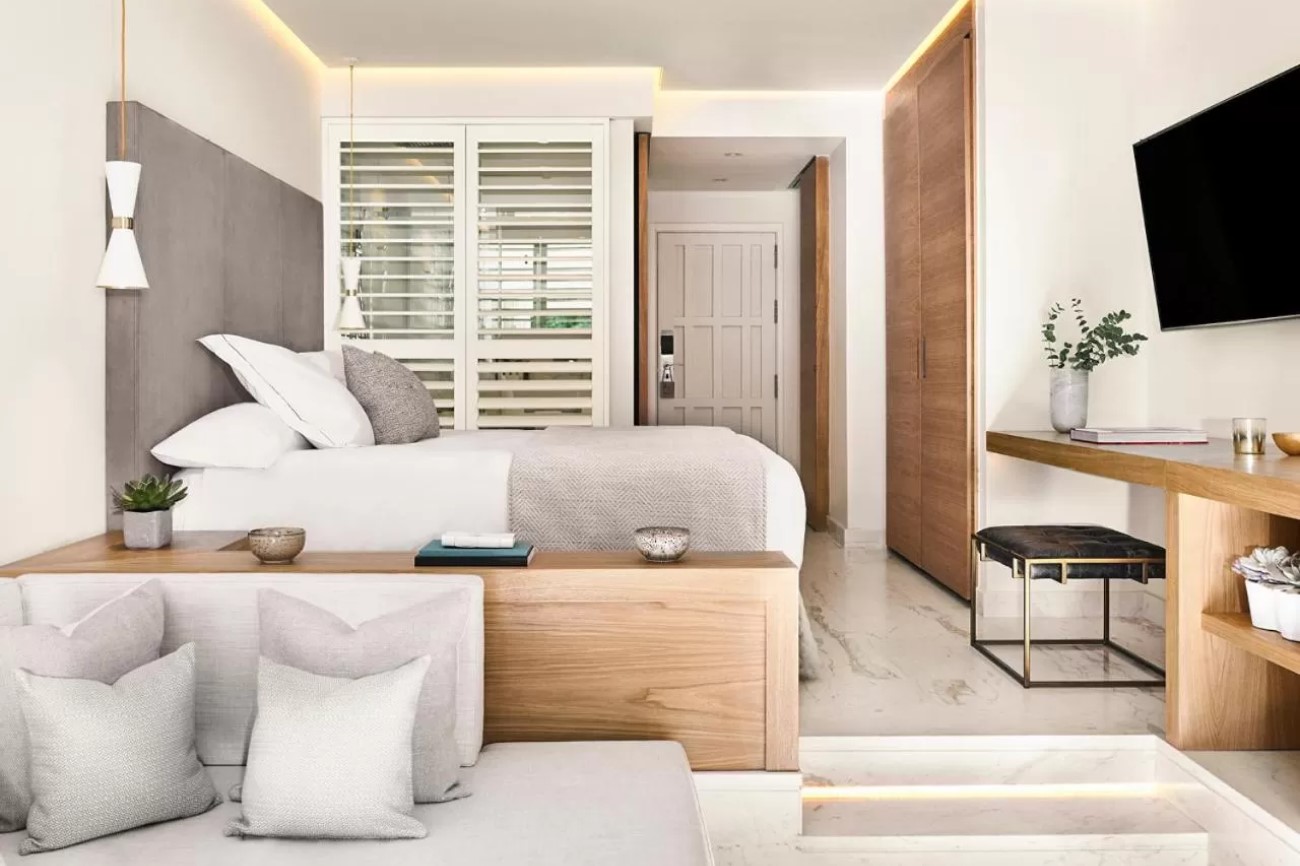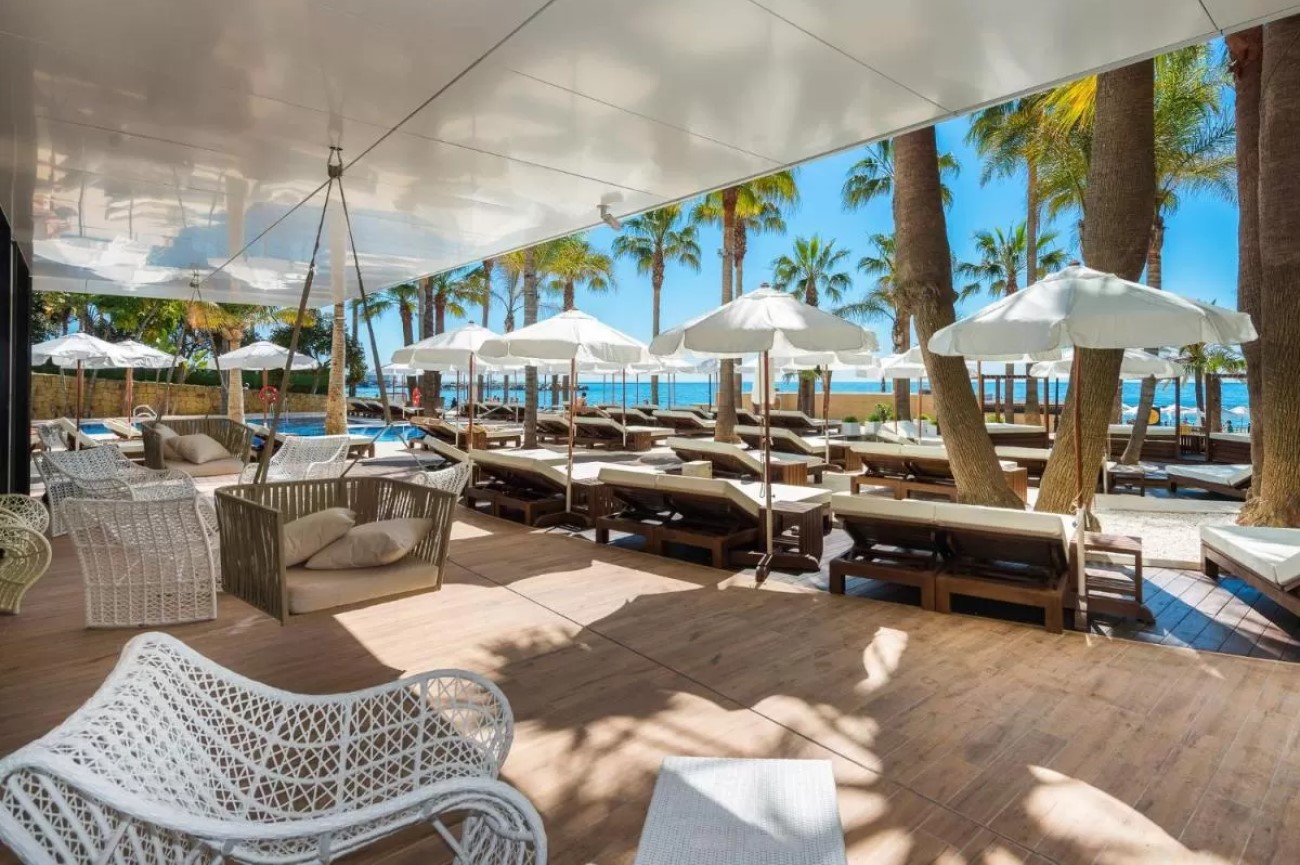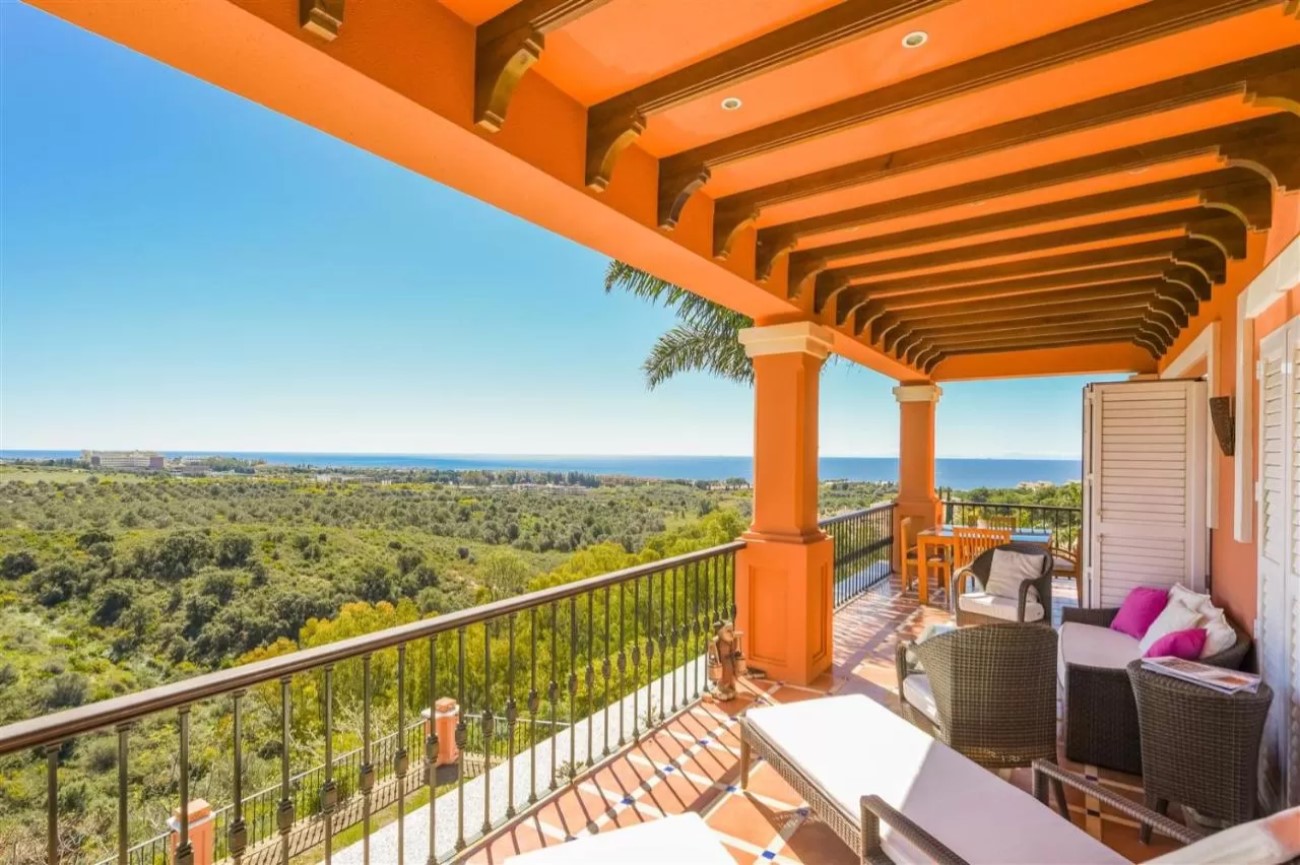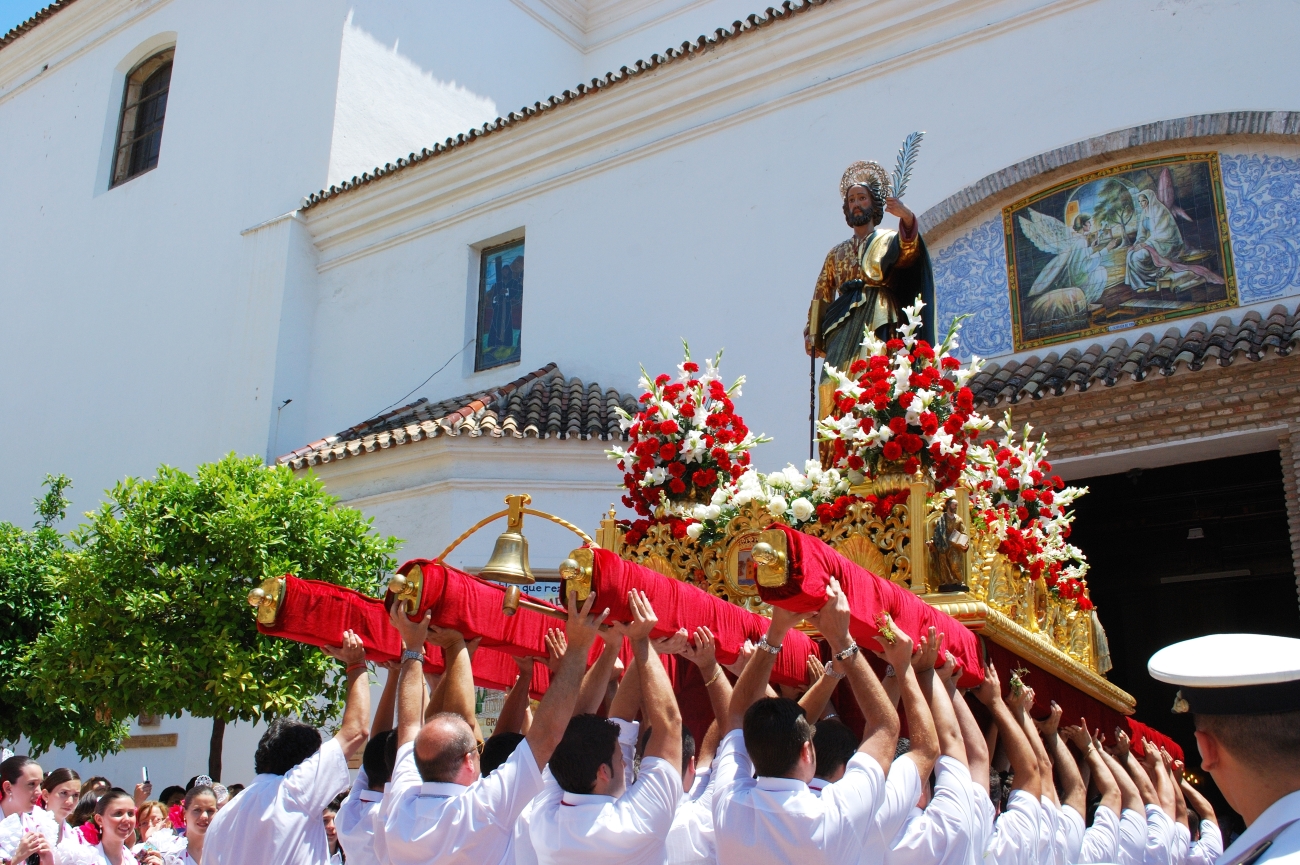Things to do in Marbella and Puerto Banús, Spain
Marbella is renowned for its luxurious hotels, golf courses, and flashy marina, but this lively town in Costa del Sol also has its historical heritage and natural wonders. Surrounded by the Sierra Blanca Mountains, Marbella offers a remarkable scenery with dozens of paradisiacal beaches and a promenade lined with Dalí sculptures.
Romans and Moors have set foot here, and visitors can still see these roots when wandering through the town’s old quarter. After seeing the beach and the old town, you can jump into a museum or hop on a cruise to Puerto Banús for a glimpse of the glamorous lifestyle.
Keep reading to discover the best things to do in Marbella, including tips on where to eat and where to stay.
Morning: Marbella Old Town
As you arrive in Marbella, it’s worth spending some time exploring the quiet casco antiguo or old town. It’s a different side of the city, with narrow cobblestone streets, historic churches, and squares surrounded by colourful flowers.
At the centre of it all is the Plaza de los Naranjos, a picturesque square lined with orange trees and terrace cafés. It’s also home to the town hall and a 15th-century church. The Ermita de Santiago is one of the oldest churches in Marbella and was the site of a mosque before the conquest of the Catholic monarchs. The church has a simple design and could easily go unnoticed if it weren’t for its yellow framed entrance and the bell on the roof.
Iglesia De La Encarnación
Still within the old town, you’ll find the Iglesia de la Encarnación, one of the city’s main historic landmarks. Like the Ermita, it was built upon a former mosque. It dates back to the 16th century, but it went through several changes in the 18th century, resulting in a mix of Renaissance and Baroque elements. Its bell tower used to be the mosque’s minaret, and it still stands out from a distance. Today the tower includes several bells, each with a different name, including “Virgin of the Incarnation” and the “Holy Trinity”. Inside, you can admire the church’s gilded altars and vaulted arches.
Museum Of Spanish Contemporary Engraving
A few steps from the church is the Museo del Grabado Español, a museum dedicated to Spanish Contemporary Engraving. The museum was established in 1992 and is housed inside a Moorish-style building. Its collection includes thousands of prints, some from renowned artists like Picasso, Dalí and Miró.
Alameda Park
Take a break from sightseeing at the Alameda Park. These gardens are the perfect place to escape the heat, thanks to its fountains and tropical trees, which provide plenty of shaded areas. Dotted around the park are beautiful benches covered with hand-painted tiles that showcase scenes from the city’s history.
Avenida Del Mar
From the park, slowly make your way to the Avenida del Mar. This scenic
walkway connects the old town to the beaches and the Marbella marina.
Beyond the sea views, visitors can admire sculptures by Salvador Dalí
and other artists scattered across the marble-paved street.
Paseo Marítimo
The Avenida del Mar ends at the Playa de Venus. You can relax for a couple of minutes here or follow the Paseo Marítimo and discover other beaches further west.
Along the way, you’ll pass by the Parque de la Constitución, a large park established in the 1950s. It used to be part of a private residence, but these days anyone can wander through its leafy paths. It features a café, a music school and an amphitheatre that occasionally hosts outdoor concerts in the summer.
Playa De La Fontanilla
Spend the rest of your morning at the Playa de la Fontanilla. If you keep walking along the Paseo Marítimo, you’ll soon end up here. At 1,000 metres long, this beach offers plenty of room to stretch your towel. It’s also an ideal spot for water sports like jet skiing. Around the beach are a couple of bars and restaurants, many of which offer sea views. It takes about 20 minutes to walk from the old town to this beach, but it’s worth the trek.
Marbella Tour Map (Morning)
Afternoon: Golden Mile
Continue your tour of Marbella at the infamous Golden Mile. On the way
there, you can drive by the Mosque of King Abdul. This stunning Arabian
temple stands out with its pointed roofs and is one of the most modern
mosques in Spain, established in 1981.
As you approach the Golden Mile, you’ll begin to see luxurious properties with tropical gardens, restaurants and high-end shops. On the east end of this promenade is the Museo Ralli, a museum that showcases pieces by contemporary Latin American artists, with a focus on surrealism. It also features a few European artists like Miró and Dalí. The entrance is free.
Roman Villa
Close to the Golden Mile are the ruins of a Roman villa, known as Cilniana. It stands on the mouth of the Rio Verde and dates back to the 1st century AD. Most of the walls are gone, but the stunning mosaics that remained make it worth the visit. The villa is usually open between Friday and Sunday at lunchtime, but you can see some of the floors from the fence.
Puerto Banús
End the day with a stroll around Puerto Banús. Often compared to the French Riviera, this is the flashy side of Marbella, with its boutique shops, luxury yachts and plenty of sports cars on display. Restaurants here are usually pretty busy, so if you want to treat yourself, it’s best to book ahead.
While you’re here, make sure to check out the striking Rhinoceros sculpture designed by Salvador Dalí. You can drive to Puerto Banús or take a cruise directly from the Marbella Marina. The boats take around 30 minutes and depart pretty much every hour. If you come in the summer, you might catch the artisanal market on the Plaza Antonio Banderas.
Marbella Tour Map (Afternoon)
Marbella Beaches
Stretching for 27 km, Marbella’s coastline offers more than a dozen beaches, most of which include small bars known as chiringuitos. Playa de Venus and Playa del Faro are the closest ones to the centre, but there are many others further along the coast. On the east side, you’ll find some of the most famous beaches including Playa del Cable (aka Bounty Beach), Nikki and Cabopino, where you’ll find the Moorish-style Torre de Ladrones.
To the west, towards Puerto Banús, Playa de la Fontanilla and Playa San Pedro de Alcantara are worthy of a visit. This last one is 1 kilometre long so even when it’s busy there’s always room to relax.
Other Things To See And Do Near Marbella
- Golf: Marbella is home to some of the best golf courses in the world. The stunning coastal views, along with the warm climate, makes this an appealing area at any time of the year. Many hotel resorts offer their own courses, but there are other options too. Among the most famous courses is Los Naranjos Golf Club located close to Puerto Banús. Other noteworthy spots include the Marbella Club Golf Resort, Marbella Golf Country Club and La Quinta Golf.
- Ojén: Ojén is a small white village set along the Las Nieves mountains, about 7km away from Marbella. Its narrow streets and picturesque squares offer a quiet retreat, away from the city bustle. You can hike along the mountains or visit the Eco Reserva Ojen, a wildlife park with deers and mouflons. It’s also worth driving up to the Mirador de Juanar for breathtaking views of the coast.
- Gibraltar: From Marbella, you can drive to Gibraltar in about one hour. This British territory is famous for its natural landscape, home to Barbary apes and friendly dolphins. If you want to know more about what to see in the area, check out our Gibraltar itinerary.
Top Things To Do With Kids In Marbella And Puerto Banús
If you’re travelling to Marbella with kids, you will likely enjoy spending time by the beach. Besides swimming, most beaches also offer a variety of water activities, like jet skiing or windsurfing.
Close to Playa del Cable is the Funny Beach Marbella, a family-friendly attraction with a go-karting track and a swimming pool.
For something a bit more adventurous, head 10 minutes east from Marbella to the Aventura Amazonia. Here you’ll find obstacle courses with high ropes above trees and zip wires for both kids and adults. Or head west towards San Pedro Alcantara and visit Costa Jump, a large indoor park with trampolines.
A bit further away, but still within easy reach of Marbella is Fuengirola. The town has a big shopping area with a cinema showcasing English films, a waterpark and a zoo.
Other places worth visiting nearby include the Tivoli World Amusement Park in Benalmadena, the Selwo safari in Estepona and the Eco Reserva Ojen.
Older kids can take advantage of other activities in the area, including scuba diving, jeep safaris, canyoning and hiking.
Best Restaurants In Marbella And Puerto Banús
Like most cities on the coast of Andalucia, Marbella’s cuisine is all about seafood. If there’s one dish that is unique to this region is the espetos . These are usually skewed sardines grilled on the beach during a moraga , a night-time barbecue. Other dishes worth trying include fried anchovies and seafood paella. From easy-going tapas bars to luxurious Michelin-star restaurants, below are the best places to eat in Marbella:
- El Cordobes: If you're looking for a casual seafood restaurant in Marbella, El Cordobes is your best bet. Sardines and prawns are the top choices here, but it’s also worth trying the fried fish and pickled anchovies, all paired with a cold beer.
- Skina: You’ll find this Michelin-star restaurant in the heart of the old town.
Here you can try innovative tapas inspired by traditional Andalusian
dishes. The menu changes with the season, but you can always count on
homemade bread and a top-notch wine selection. The space is limited, so
make sure to book ahead.
- Messina: Just a few steps from
the Marbella Puerto Deportivo is Messina, another Michelin-star
restaurant. The interior is pretty minimalistic, so you can focus on the
colourful dishes created by chef Mauricio Giovanni. You can order one
of the tasting menus or choose à la carte. To pair with the meal, ask
the house sommelier for a wine recommendation.
- Paco
Jiménez: Set within the picturesque Plaza de los Naranjos is this small
fine-dining restaurant. It gets its name from the owner and chef, Paco
Jiménez. It’s ideal for an intimate dinner, especially if you get a seat
on the balcony overlooking the square. The menu includes a mix of
seafood and meat dishes, as well as delicious desserts like the tarta
de queso (cheesecake).
- Restaurante El Estrecho:
Established in 1954, this family-run restaurant is still going strong.
It’s a small place, but if you can’t get a table, there’s always room by
the bar. You can try a variety of tapas here, including croquettes and
seafood dishes like prawns and octopus.
- Puerto Banús: Puerto Banús is also home to a variety of bars and restaurants. If you’re looking for a quick snack, head to Astralito or the Burger Bar. For a full meal try the Meksian, which serves Asian and mexican cuisine, La Copa Fria for seafood dishes and El Txoco de Luis Salinero for a fine dining experience.
Best Marbella Hotels
- Marbella Club Hotel (5 stars): Set halfway between Marbella and Puerto Banús, this hotel stands out with its relaxed atmosphere and beachfront location. You can book a room or entire villas, some of which come with a private pool. There’s also a saltwater pool, five restaurants, a gym, a spa and a beach club.
- Anantara Villa Padierna Palace (5 stars): This luxurious resort attracts visitors with its world-class golf courses and proximity to the beach. Beyond golf, the hotel offers a variety of facilities, including a thermal spa, a racquet club and swimming pools. There are also eight restaurants on offer, which feature anything from Mediterranean to Japanese cuisine.
- Nobu Hotel Marbella (5 stars): In the middle of Marbella’s Golden Mile and only a few steps from the beach is Nobu, a five-star hotel designed for adults only. It offers modern and elegant rooms, most featuring private balconies. At the hotel restaurant, guests can try a mix of Japanese and South American cuisine. Other facilities on-site include an outdoor pool, a spa, a gym and a sports court.
- Àmare Beach Hotel Marbella (4 stars): If you want to stay in the centre of Marbella, the Amare Beach is an excellent alternative. This adults-only hotel is located five minutes away from the old town and Playa de Venus. The rooms are spacious, and some offer balconies with sea views. Guests can take advantage of the beach club, swim in the pool or relax at the hotel’s spa.
- Boutique Hotel Marbella Heights (4 stars):
Perched on a hill, this hotel offers splendid views of the sea and the
mountains. It only has five bedrooms making it ideal for those looking
for a bit of privacy. The terrace and outdoor pool are the best places
to spend the summer, but even when it gets colder, you can still enjoy
the views from the hotel's salons. Guests can also book massages or
private yoga classes.
Best Time To Visit Marbella And Puerto Banús
Set amid the Costa del Sol, Marbella enjoys a warm climate pretty much all-year-round. If you want to spend time on the beach, the best time to visit Marbella is between June and September. The average temperature around this time is 29ºC, and the sea is warm enough for a swim. It’s also the season of the annual fair, one of the city’s most popular festivals. Another alternative is to come in the spring when the temperature is a bit lower, and there are fewer crowds around.
Marbella Festivals
- Fair and Fiesta of Saint Bernabe: At the beginning of June, Marbella honours its patron saint, Saint Bernabe, with a week-long party. People gather in the streets to dance, sing and eat, especially near the old town and the Alameda Park. There are also food stalls serving tapas and beer and an open market.
- Virgin del
Carmen: This traditional festival takes place around the 16th of July
and pays homage to the Virgin del Carmen, the fishermen’s patron saint.
It includes a procession that starts and ends at the fishing port,
passing through Puerto Banús with colourful boats accompanying the image
of the Virgin. The celebration also includes a choir performance and a
mass at the chapel in the fishing port.
- El Tostón: Every year on the 1st of November, Marbella hosts the fiesta del Tostón. Families and friends gather up in the countryside to roast chestnuts and drink local wine. The party usually lasts the whole night, with people camping out in the area.


